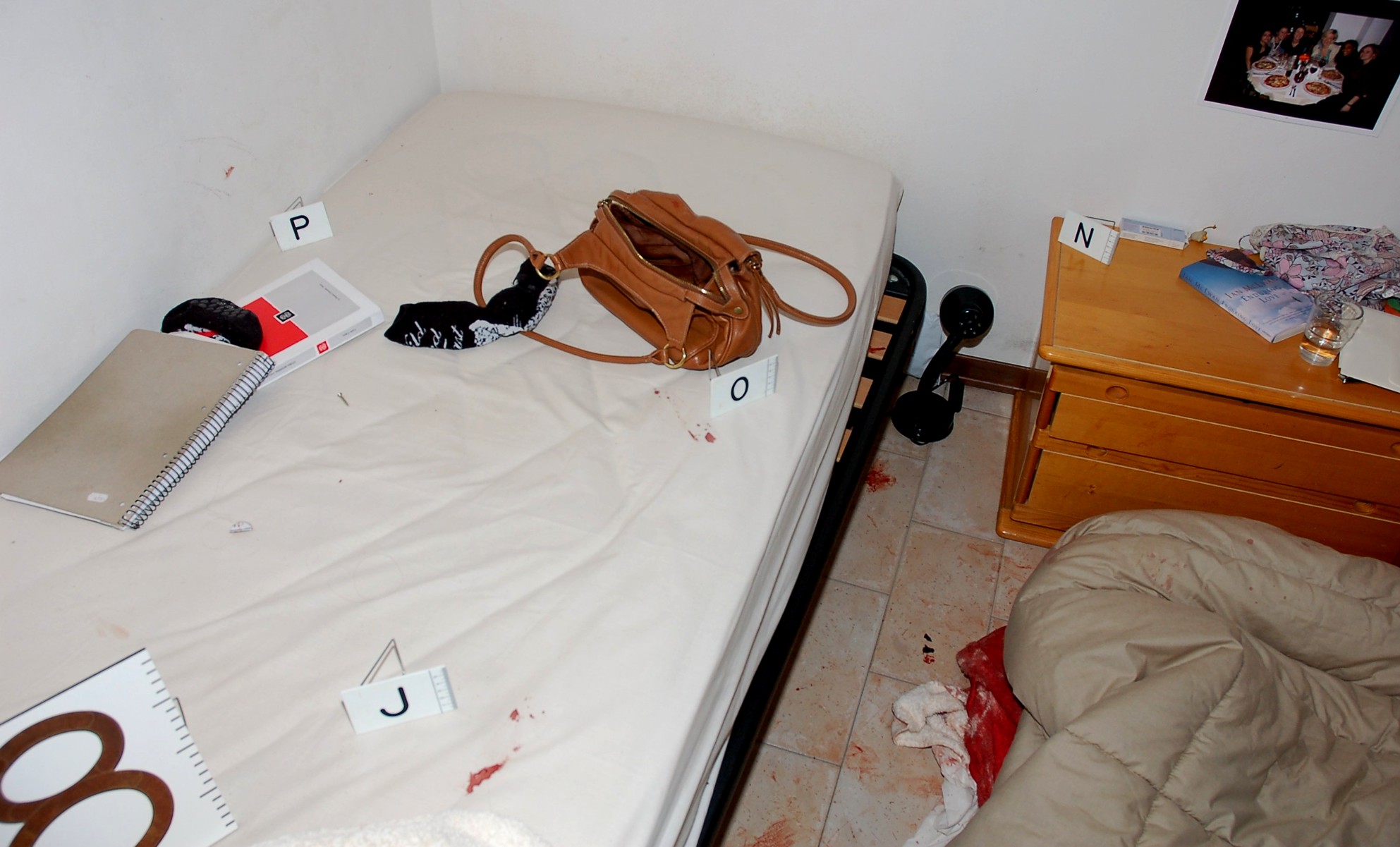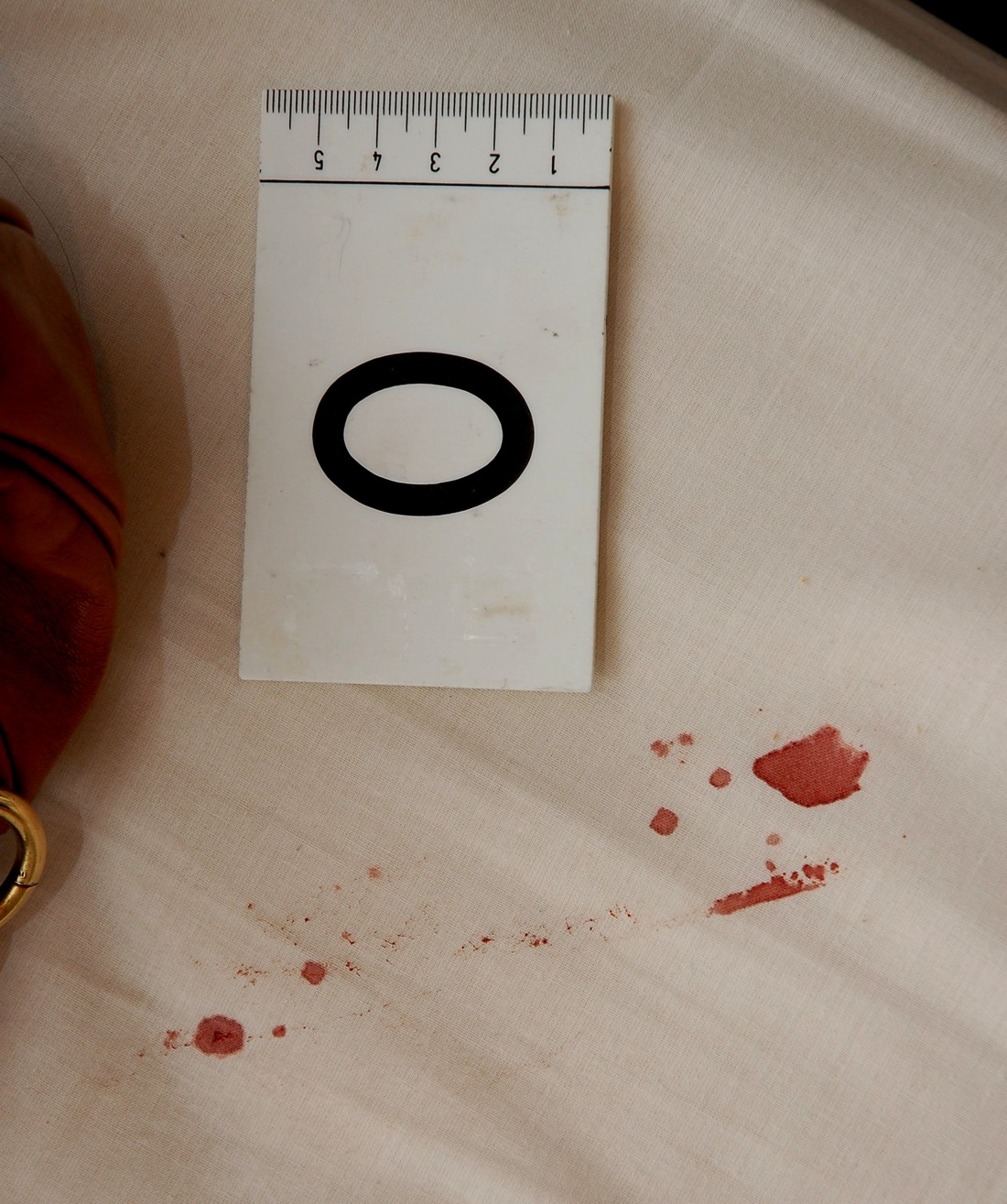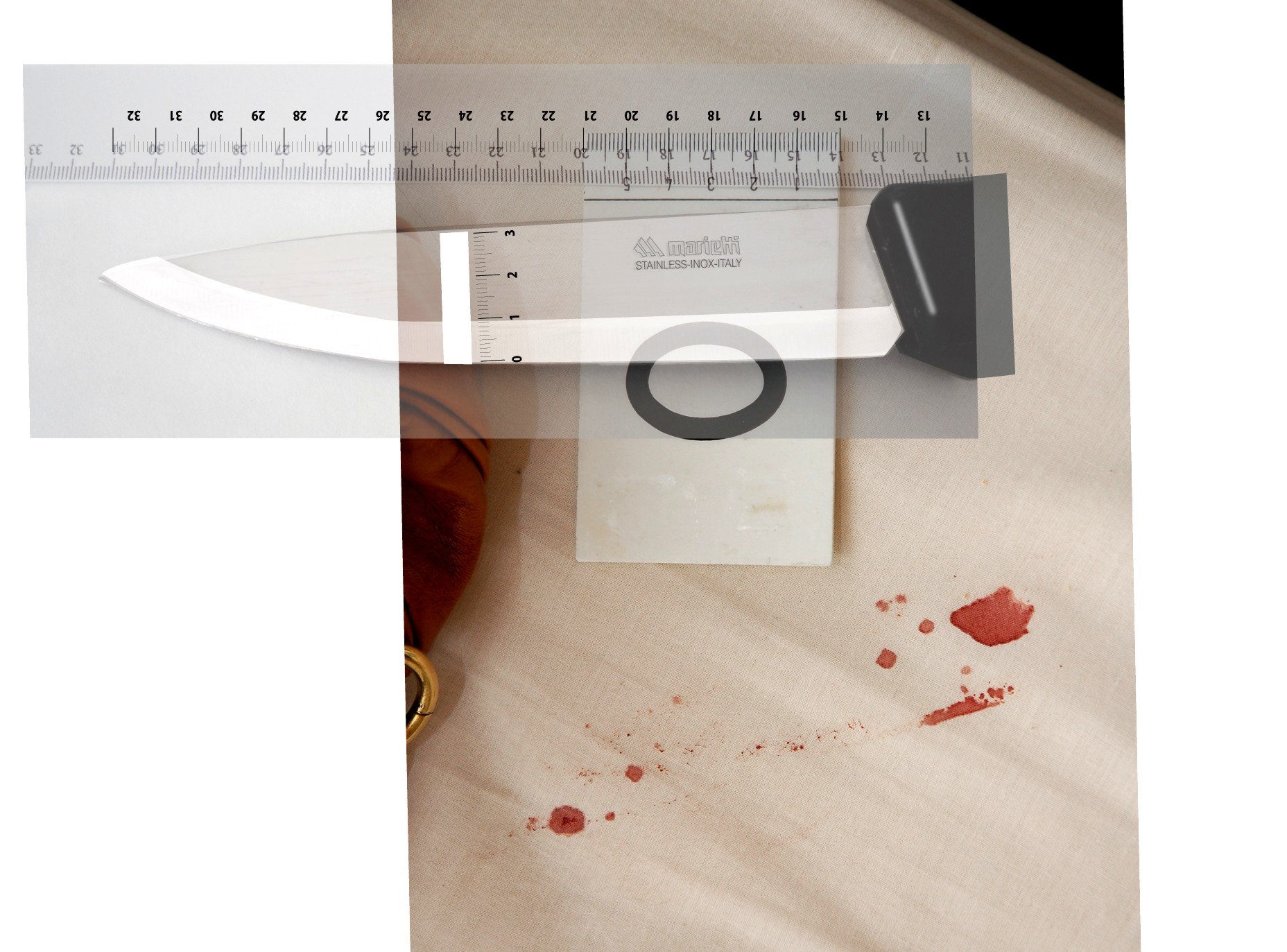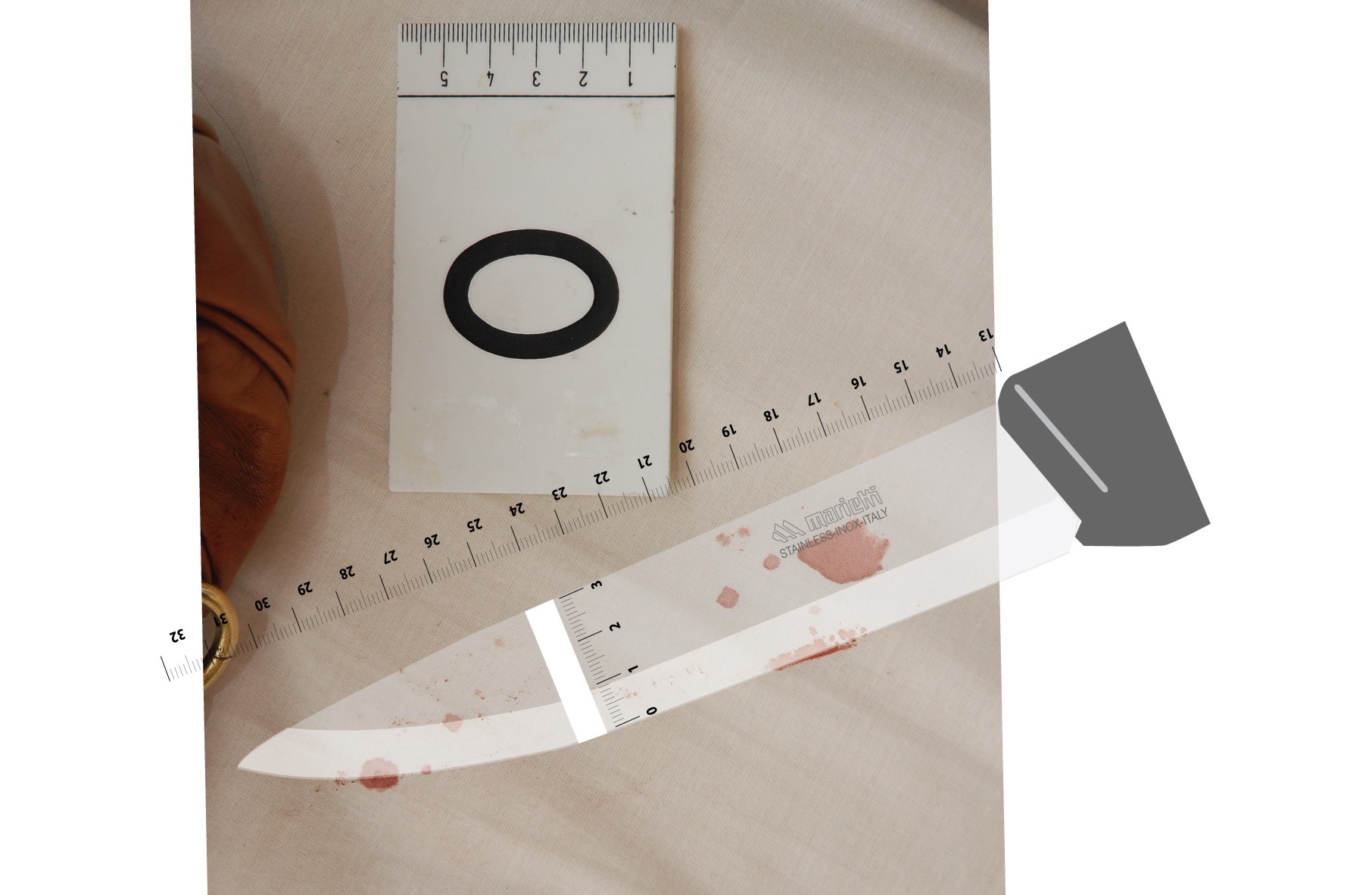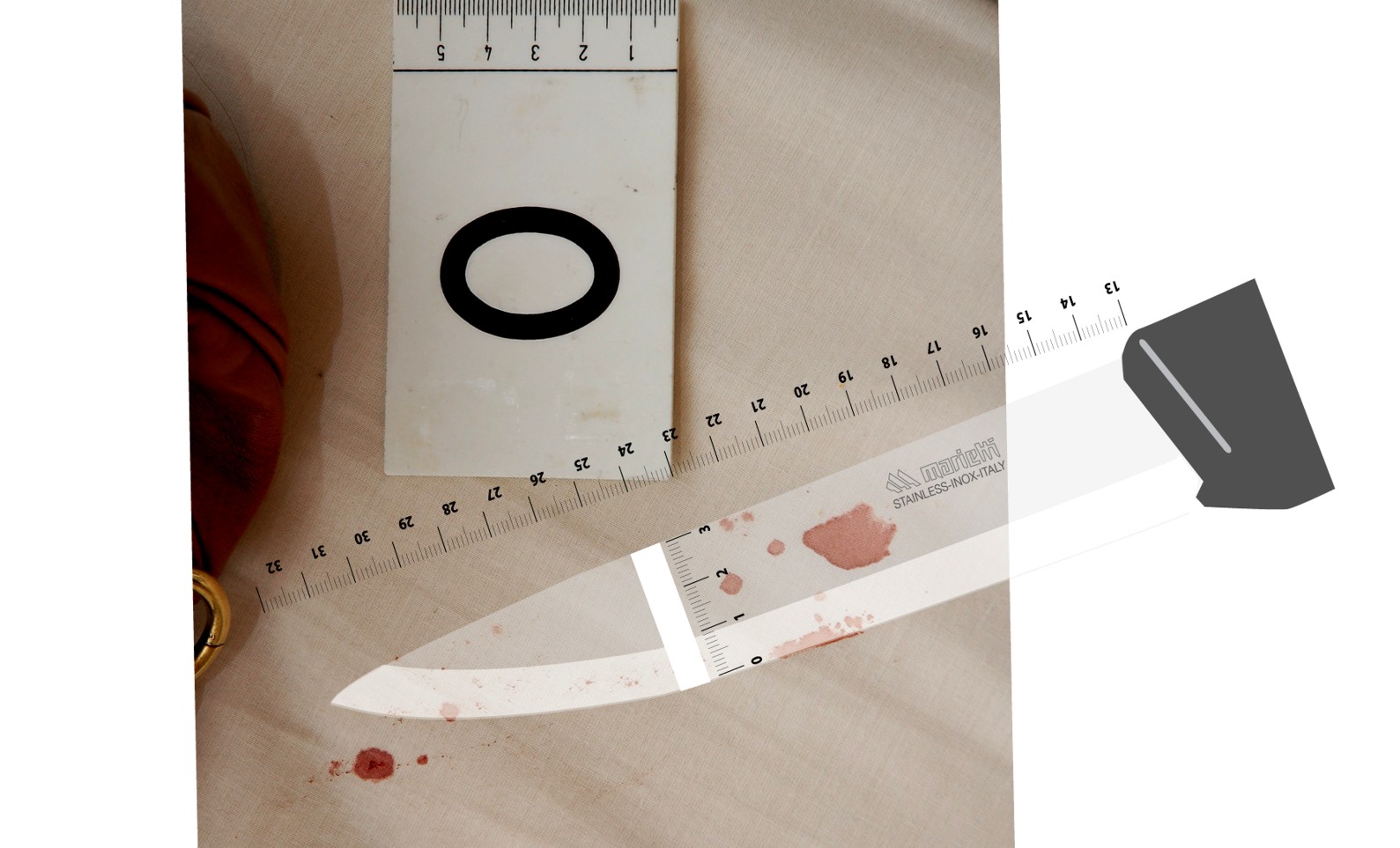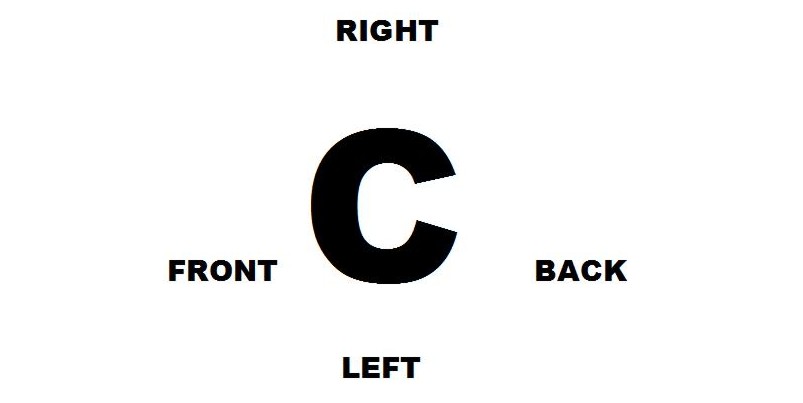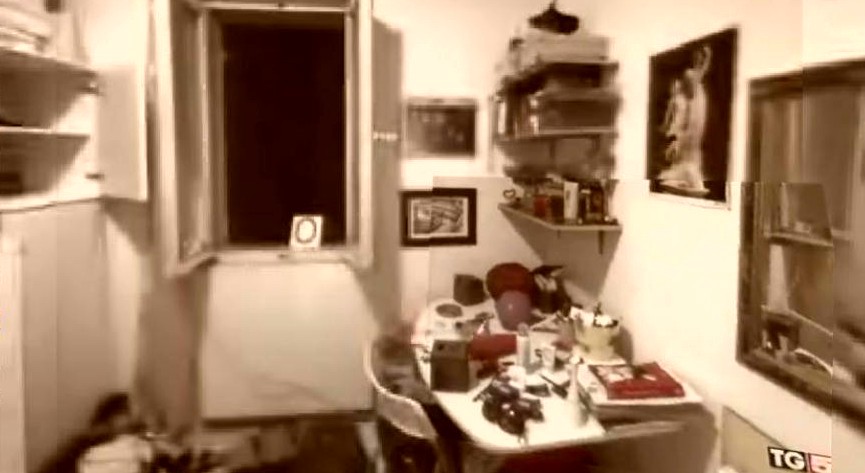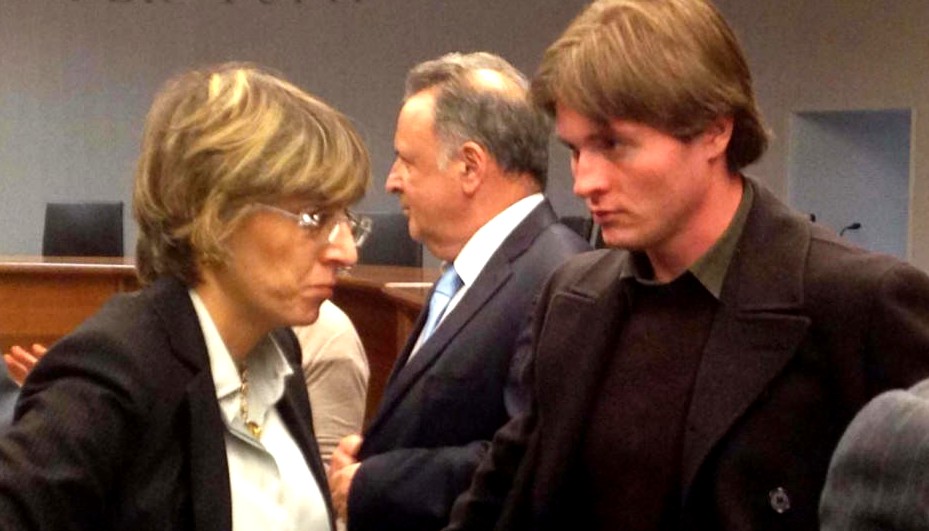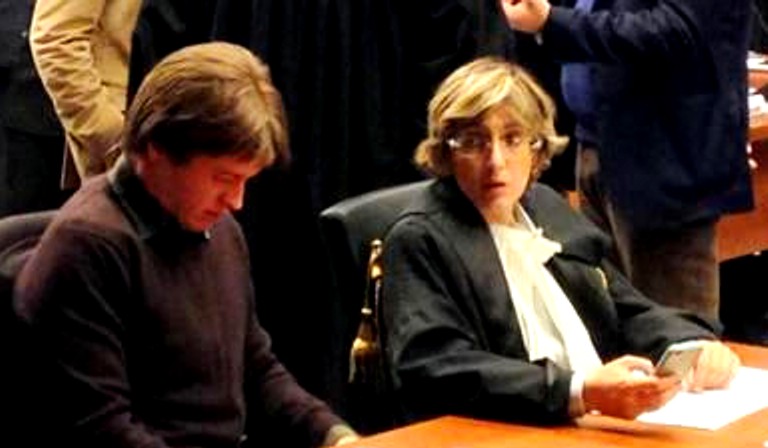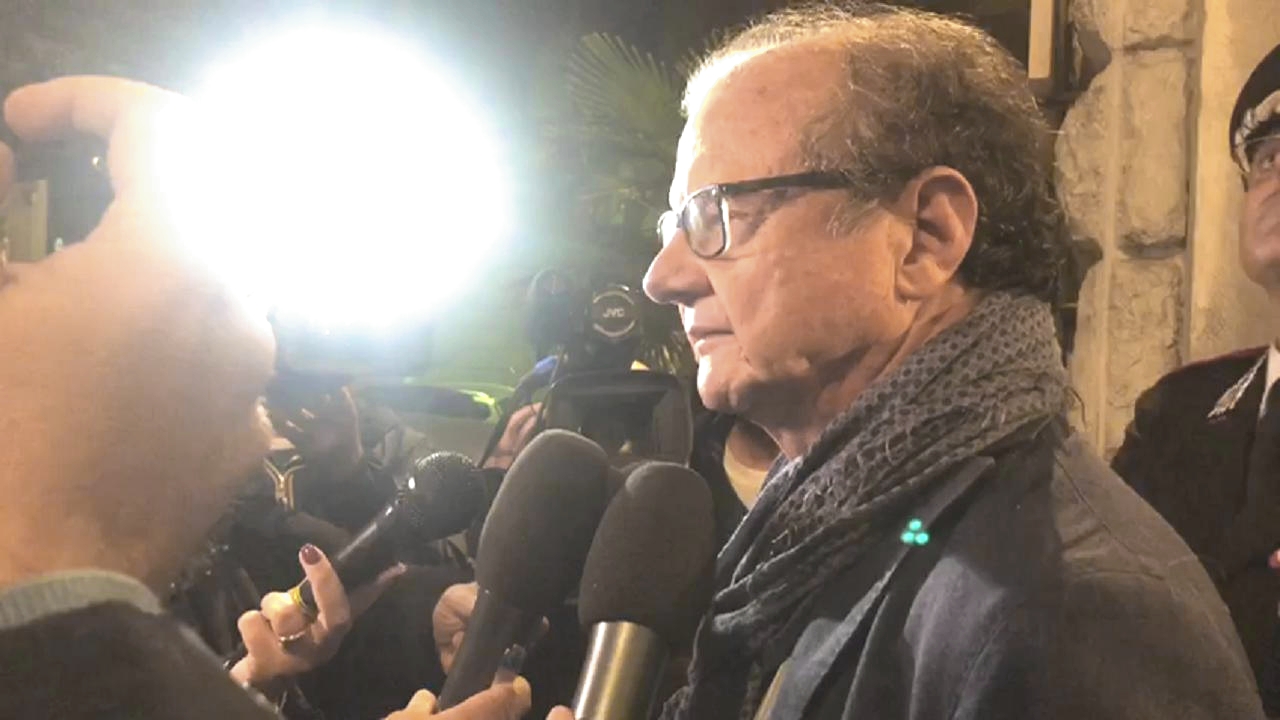
Category: Florence 2014+
Thursday, January 30, 2014
Appeal Session #10: After Defense Remarks Panel Of Judges Reaches Its Decision: BOTH GUILTY
Posted by Our Main Posters
Verdict: Both are confirmed guilty
The Massei verdict is upheld. The sentences are 25 years for Raffaerle Sollecito and 28.6 years for Amanda Knox. Sollecito is to have his passport taken away.
For Knox they could issue a worldwide Interpol Red Notice for immediate arrest around the world, even before going for extradition, to stop her dishonest self-serving blabberings.
Take a look at our conjectures down the bottom of this post on the judges’ deliberations. Looks like we got One, Two and Four right and Knox will be named in the judges report as the prime instigator.
That will hardly help her resist extradition. And it will please Guede and Sollecito, who both always hint at that.
To CNN: yet again this is NOT double jeopardy. Read the extradition treaty. It was ONE valid trial (2009) and now ONE valid and failed appeal (2014). Not two trials.
Tweets from our main poster Machiavelli
26. All these many thanks are so warming and comforting; I’m glad my contribution was useful among the many others.
25. No measure taken for expatriation of Knox because she is a US citizen currently in her own country.
24. Passport withdrawn for Sollecito and movement restriction within the boundaries of the state of Italy. No restriction for Knox.
23. Ruled that Knox’s royalties belong to Lumumba,
22. Accessory penalties/settlements: established Knox stinks, ordered Dalla Vedova to change jobs… (!)
21. Her calunnia sentencing has been increased from 3 years (Hellmann-Zanetti) to 3 years and 6 months.
20. To be more precise: Knox has been sentenced to 28 years and 6 months. (She has already served four years).
19. Massei sentence confirmed (25y), Knox sentence increased to 28 years because of calunnia aggravation
18. Bongiorno very agitated
17. Five minutes and a half from a verdict?
16. Judge declared the verdict will be 3D and distributed goggles [?]
15. Sollecito was in the courtroom. Appeared nervous.
14. Said because of the greatness of their power they should acknowledge reasonable doubt.
13. Ghirga emphasized discretional power of the court. Said they have big power to acquit.
12. In point of law: Ghirga said evidence must be considered as a whole in compliance with SC, but assessment should find reasonable doubt
11. Said no blood on knife because of negative TMB and blood confirmatory tests.
10. Ghirga: cited the claims about picograms, said amount is not the point, the problem is test repetition and other conditions
9. Says bruise at back of head is compatible with frotal fight against single aggerssor (disagreement with Introna on this too)
8. Ghirga: Meredith’s blue sweater was removed before fatal stabbing, as for Torre’s opinion. Admitas he disagrees with Sollecito’s defence.
7. Ghirga talked about: Meredith’s blue sweater, an echimosis at back of her head, DNA laboratories and Stefanoni’s quantization
6. Ghirga recalled a small number of details of physical evidence and autopsy.
5. Dalla Vedova asked acquittal, did not specify, whereas Ghirga instead, talking later, invoked reasonable doubt.
4. D.V. says believes there are other Supreme Court rulings in his favor.
3. D.V. emphasized the single pieces of evidence should be assessed each one in parceled out, atomized way before considering the whole
2. DV focused on evidence assessment procedure, quoted SC rulings.
1. Dalla Vedova’s talking lasted a short time, and not very orderly.
Tweets from reporter Barbie Latza Nadeau
28. Court: Amanda Knox Is Guilty. See more in The Daily Beast.
27. Kercher family members being briefed by lawyers and British consulate.
26. Sollecito must surrender all documents, passports, identification,
25. Its 25 years for sollecito and 28.6 years for amanda knox
24. Amanda Knox [2009] guilty verdict upheld, sollecito [2009] guilty verdict upheld.
23. Judges and jury enter.22. Huge security presence ahead of verdict including riot police outside and in public area of courtroom amandaknox tense
21. meredithkercher sister stephany and brother lyle have arrived in court for verdict.
20 Prosecutor Crini has arrived in court for verdict in amandaknox appeal
19. Clerk says between 9-930 local time judges will return. Says judges want “utter silence no shouting or clapping”
18. Court clerk says verdict will be delivered between 9 and 9:30 tonight.
17. Amanda Knox “˜Afraid’ Of Today’s Court Verdict http://thebea.st/LeteHD via @thedailybeast
16. Court clerk says at 8pm she will go back to judge to find out if and when they are ready to deliver verdict.
15. Court clerk says “presumably verdict at 8:00 but everyone come back at 7:00
15. Court clerk just announced that at 6pm local they will tell us when the verdict will be announced.
14. Mario Spezi, author of Monster of Florence, has come to court to hear amandaknox verdict.
13. Lawyers for amandaknox and sollecito, journalists already in courtroom ready for verdict that come come any time from 5pm Florence time.
12. Lunch has just been brought in to judges and lay jury deliberating amandaknox case. No wine.
11. Refreshments just delivered to jury members in amandaknox new appeal, espresso, cappucino and possibly a tea…
10. Judge in amandaknox new appeal says decision will not come before 5pm.
9. amandaknox lawyer asks court to absolve his client.
8. amandaknox lawyer says the dna on the knife attributed to meredithkercher can not be verified, can not be considered.
7. amandaknox lawyer Ghirga tells court they have to look at all the evidence to reach verdict, not value pieces here and there.
6. amandaknox lawyer says you can’t put two innocent people in jail to cover up mistakes of judicial system.
5. amandaknox lawyer tells judge: you cannot convict for murder in the name of Italy when evidence is ‘probably’ attributed to a defendant.
4. amandaknox lawyer says you can’t cancel out evidence, says Amanda’s rights were violated, she was in shock when she accused Lumumba.
3. sollecito in court by his dad who said they are all nervous for verdict over drinks with journalists at hotel bar last night.
2. amandaknox lawyer CDV says they are serene going into verdict because they believe in her innocence,
1. Court in session. One of the jurors wearing a shiny spangled skirt, rest dressed soberly.
Tweets from Freelance Reporter Andrea Vogt
13. Meredith Kercher’s brother: It was the best we could have hoped for, but amanda knox verdict not cause for celebration.
12. amanda knox guilty verdict upheld. Her lawyer Carlo Dalla Vedova said he has called her. She did not cry. She was “petrified.”
11. amanda knox conviction upheld. sentenced to 28 years and six months. Sollecito to 25. Ordered passports to be taken.
10. Meredith’s sister and brother are accompanied by British consulate officials. A hush has come over the courtroom.
9. The family of meredith kercher has arrived in court to hear the verdict.
8. Even most experienced Italian court reporters not predicting what long wait for amanda knox verdict means. Could go either way
7. amanda knox verdict is expected at 9 or 9:30. Clerk reminds about the decorum expected:no applause, shouting, cheering, etc
6. Standing room only in Florence court as media, legal teams, public await amandaknox verdict (timing soon to be announced).
5. Judge and jury in amandaknox case have retreated for deliberations. Verdict not before 5 pm Italy time.
4. amandaknox Judge : we will not give a verdict before 17, after that,can come any time, but will announce with lots of advance notice.
3. Ghirga: We wait anxiously and seriously for justice for Meredith. But doing justice means doing it also for amandaknox and RS.
2. amandaknox lawyers are in court. Ghirga: “siamo fiduciosi, serene, emotionati.” (Roughly: “Trusting, calm, on edge”).
1. Verdict expected late today in amandaknox appeal….
Freelance Reporter Andrea Vogt On Website
From The Freelance Desk
Amanda Knox is expected to wait out the verdict in her appeal at her mother’s Seattle home (likely with American television news networks present) while Raffaele Sollecito was in court with his father and a friend. Sollecito made no remarks upon leaving for the courthouse in a taxi, surrounded by a pack of cameras. Meredith Kercher’s sister, Stephanie, and brother, Lyle, are also expected in Florence today for the court’s decision, expected in the evening hours….
Conjectures on what the judges may be discussing
The panel of judges is in effect deciding now on positions that must be sustained in 2-3 months in a 100-400 page document that must be okayed by the Supreme Court.
This might be what the quite long (by Italian standards, they will have discussed the case intermittently) jury discussion today is focused upon. Here are four possible issues.
Possible issue one
As sharp Italian media are pointing out, Prosecutor Crini departed from the Massei scenario and suggested a different driver in one key respect.
Like Mignini and Micheli in 2008 he assigned the role of prime mover to Amanda Knox and not to Guede. (Nobody ever assigned it to Sollecito.)
Maybe hoping to give RS and AK a break the Massei jury (not neccessarily the judge himself) assigned to Guede the primary role in starting the attack, saying maybe he forced himself upon her.
Then maybe the other two came in from next door, and set about helping him to subdue Meredith.
They just happened to have two knives handy, and even Massei assigns the fatal blow to Knox.
Crini argued as more likely that Knox started to quarrel with Meredith over hygiene or drugs or money and the other two joined in and for 15 minutes the attack escalated.
In this Knox and not Guede is assigned the role of prime mover.
The judges may want to accept this and seek to assign Knox a harsher punishment accordingly.
(Neither court seems to have settled on a convincing reason for why the big knife was brought down from Sollecito’s house which looks to us at minimum forboding.)
Possible issue two
This relates to the scenario in the comment above. Judge Massei lopped five years off the routine sentences by conjuring up “mitigating factors”.
One such factor was the duvet placed over Meredith which Massei thought could be a sign of remorse, surely by a woman.
Many including psychologists never agreed with this. It could have been simply an aversion to all the blood, which Knox on the stand in 2009 chillingly described as “yucky”.
If so the sentences awarded could creep up beyond the durations decided on by Massei. Above 25 and 26 years.
Possible issue three
This is an alternative to One and Two above. The judges might think the crime was more like a manslaughter, an attack that ended in murder
But not intended as such and never agreed to by two of the attackers. In which case sentences could be a lot lighter.
Possible issue four
There are financial award considerations. How much to award to whom, plus maybe ways to ensure their payment in light of Knox blatantly stiffing Patrick..
[Below: image of the judges and lay judges arriving this morning]
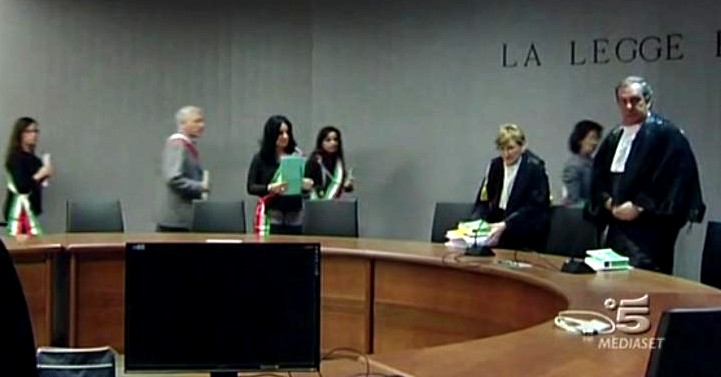
Wednesday, January 29, 2014
Continuing Enormous Strength Of The Evidence Which Defenses Seem To Have Abysmally Failed To Shake
Posted by Our Main Posters
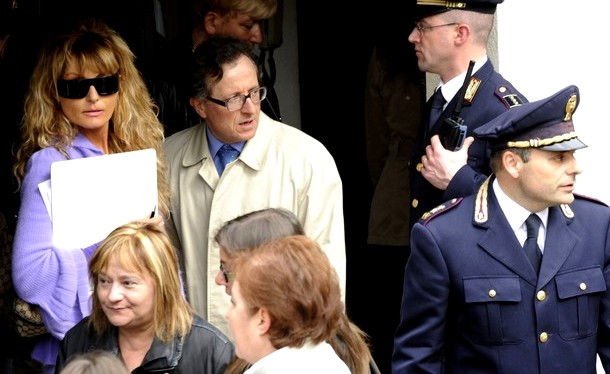
[Above Judge Massei at Meredith’s house with panel-of-judges members early 2009]
What this Florence appeal is REALLY about
There is much confusion on this, sowed by various at-distance commentators who don’t read the Italian press or the excellent English-language reporters right there on the spot.
This is NOT a re-trial. This is a FIRST appeal by Sollecito and Knox against the guilty verdicts and sentences Judge Massei awarded them late in 2009. It is being repeated since their defense teams helped to bend the first (Hellmann court) iteration of the first appeal two years ago.
Since the end of 2009 they have been provisionally guilty of murder and other crimes, subject to final ratification by the Supreme Court, which has not yet occurred. Judge Hellmann decided to let them out and travel worldwide. Many think his decision on this was legally weak.
Was there prime-face justification for this appeal?
Under US and UK law many lawyers and judges think the judicial process could have stopped right there in the US and UK, because the grounds for appeal the defenses came up with in 2010 were essentially innuendo about DNA and little else.
But the pro-defendant Italian system unlike almost any other in the world allows appeals if any are filed to automatically go forward. So the bent, stretched-out and illegally wide-scope Hellmann appeal of 2011 was the first result.
Appointed apparently in illegal circumstances to replace the highly-qualified Judge Chiari (the lead-judge for criminal appeals, who then resigned) Judge Hellmann was ill-qualified at best - he was not a criminal judge and had handled only one other murder trial before, which he got wrong.
The annulment of the first first-appeal
The Supreme Court very rarely completely annuls any trial or appeal. But in this case in March 2013 it did just that, on a large number of grounds.
The 2013-2014 Nencini appeal court in Florence starts with the early-2010 Massei report plus new guidelines from the Supreme Court. Nothing else floated since early 2010 counts.
This case seems to break all records ever for (1) defamatory and dishonest PR; (2) dirty tricks, many illegal, by the defense; (3) dishonesty by those accused in two defamatory books and multiple statements to the press; and (4) greed and blood money while the process still goes on.
Contempt of court trials and investigations have commenced to push back, Amanda Knox is particularly at risk because her book contains false accusations of crimes (again) and she defies the Supreme Court in not paying Mr Lumumba his damages though she destroyed his business.
Suggested Reading: Part One
Sooner or later (no necessarily now) read all the must-read posts in this group here, all the open questions for Sollecito in this group here, and all the open questions for Amanda Knox in this group here.
1. Getting up to speed on the 2008 RS and AK charges
Our four-part summary of Judge Micheli’s report is the best thing to read (scroll down) especially Micheli’s argument that ONLY Knox had any reason to re-arrange the crime scene - she lived there and needed to point evidence away from herself.
Also read Amanda Knox’s and Raffaele Sollecito’s many mutually contradictory attempts to provide one alibi for both.
2. Getting up to speed on the 2009 RS and AK trial
The prosecution performed brilliantly and left the defenses despondent and out-classed (paving the way for more dirty tricks in 2010-13) and we were told that two defense lawyers nearly walked off.
To get a flavor of how badly the defenses did, read this post and this post on Knox’s absolutely disastrous stint on the stand. From there the defense portion of the trial really went downhill.
To get a flavor of how well the prosecution did read about the damning reconstruction (known about in all of Italy but not widely elsewhere) described here and here.
3. Getting up to speed on the Massei 2010 Report
The most vital read of all is the short-form version of the Massei Report by Skeptical Bystander and a team on PMF dot Org. If you have no time to read any posts, make sure to read that.
The other vital reads, not here but on the new “The Murder Of Meredith Kercher Wiki”, are the overview of the evidence and the chart of evidence synopsis.
We had a large number of posts starting in 2010 checking out whether in all details the Massei Report got it right. Read this first take.
4. Getting up to speed on the crime-scene scenario
Vital to understanding the Massei court’s crime-scene scenario which Prosecutor Crini espouses, wade through this excellent reconstruction of the crime in a long Powerpoint by our lawyer James Raper with the Powerpoint whizz Kermit.
About Part Two
The next part of our most-recommended reading from 2010 to 2014 will follow after the verdict to help correct the ill-informed debate over whether Knox goes back to jail.
It hardens the case and in our view leaves no holes for RS and AK to wiggle through. We will point the post to those arguments that anyone tries to raise.
Monday, January 27, 2014
An Investigation Into The Large Knife Provides Further Proof That This Was THE Knife
Posted by Ergon
Overview
This is the first report of an investigation (the second part follows soon) of the kitchen knife used in the murder of Meredith Kercher, RIP.
Specifically its compatibility with the imprint of a bloody knife found by police investigators on her bed under-sheet which as you will see here seems possible to prove.
Two other recent posts also concentrated on aspects of the knife as strong proof: (1) proof of both Knox and Kercher DNA and (2) proof from the throat wounds.
- Reference files are from very high definition crime scene photos not in general circulation.
- Grateful thanks to the volunteers of the Meredith Kercher community who assisted in this production
Florence Court of Appeals
This is our poster Machiavelli, tweeting from the Florence courtroom on November 26, 2013:
“(Prosecutor Alessandro) Crini stated that this kitchen knife was compatible with the knife print on Meredith’s bed sheet”.
And this is from the defense summing up on January 09, 2014:
Bongiorno: “It’s too big, not the murder weapon.”
“Bongiorno shows a picture with an envisioned “knife” (pocket knife belonging to Guede?) together with the print on the bed sheet.”
“Nobody brings a “small blow with a big knife” “You don’t use half of a big knife” (she says)
Genesis of an investigation:
To recap: evidence was been presented at the Massei court of the first instance, which accepted that the kitchen knife, containing both Meredith Kercher’s DNA on the blade (trace B) and Amanda Knox’s DNA on the handle (trace A) was the weapon that struck the fatal blow to Meredith Kercher’s throat.
At some point after the attack, the perpetrator, Amanda Knox, puts it down on the bed, leaving “hematic stains” (bloody imprints) on the mattress.
The court concludes the shape of the imprints are compatible with the kitchen knife. It also concludes, based on the size of a lesser wound that a second, smaller knife caused the wound on the other side of the neck, and, the impossibility of accepting that a single weapon inflicted both wounds.
This is what it boils down to now, as we come to the final arguments of this case on January 30, with a decision to be handed down by the court later in the day:
- Was the kitchen knife found in Raffaele Sollecito’s kitchen the murder weapon that killed Meredith Kercher on November 01, 2007?
- Did the killer leave behind proof in the form of bloody imprints on the under sheet covering Meredith’s bed?
- And is the defense trying to divert attention away from it, even though the image on the bed fits the dimensions of the kitchen knife?
- And pointing to a second knife, not ever found?
This article (to be followed by part II) was prepared to offer answers to these questions.
Methods used
As someone with a keen interest in photography, I know we see things in photographs that are not always apparent to the naked eye.
Where before we had all been misled by low definition photographs released by the defense to obscure incriminating details, I was able to obtain and view the high definition photographs shown here that proved that indeed, the bed imprints matched the seized kitchen knife, exhibit 36.
These photographs, first posted at Perugia Murder File Evidence Files have been circulating for some time, with members trying to match the knife to the bed imprints, but not, in my opinion, being able to match it exactly.
First, note that the killer placed a knife on two separate locations on the bed, marked by reference cards “J”, and “O”. (Reference photos below.)
I discarded “J”, because there was too much blood there to form an accurate measurement. The killer lifted the knife and then placed it at “O”, which gave a better image, but even then, did not match exactly. Still, it was clear the images looked like a kitchen, and not, a pocket knife as alleged by the defense.
Looking at the reference photo, I saw a double image of a knife blade at “O”. (see where there’s a curved edge of the blade? That’s what convinced me there might be a double image there)
Conclusion reached
My opinion is the knife shifted slightly when it was placed there, hence the double image, which now made a perfect match with the kitchen knife, in both instances (see reference photos).
So I got a professional illustrator and other skilled people people to do the scale drawings and produce the video you see above which seems to provide conclusive proof the murder knife was placed on the bed.
Reference photos:
Image 1 above (click for larger image): Bed II (Image J and O on under sheet, shot November 02, 2007)
Image 2 above (click for larger image): Knife II (Image O on under sheet, shot November 02, 2007)
Image 3 above (click for larger image): FOTO5BIS (Conti-Vecchiotti lab, Mar. 22, 2011)
Image 4 above (click for larger image): Knife-Bed-Vector-AllScales (To prove the scales used to match the images)
Image 5 above (click for larger image): Knife-pos-lower-hi (The knife’s first resting position at “O”)
Image 6 above (click for larger image): Knife-pos-upper-hi (The knife’s final resting position at “O”)
Next steps
There are only four more days left till the Florence Appeals Court under Judge Nencini issues its verdict. It must of course consider ALL the evidence, of which there is a preponderance that indeed suggests the verdict will, as would be proper, be guilty as charged.
Part II will be ready ASAP. It will be a recap of Massei on the knife, and how the defense continually tried to divert us away from the knife image by saying it did not fit the dimensions of the major wound. Also will have Frank Sfarzo’s misdirection and Bruce Fischer’s amateurish attempts to prove that Rudy Guede caused the knife wounds.
Happy as always to do my share for justice for Meredith Kercher.
Monday, January 20, 2014
Appeal Session #9: Sollecito Team Concludes, Prosecutor Crini Rebutts Defenses’ Claims
Posted by Our Main Posters
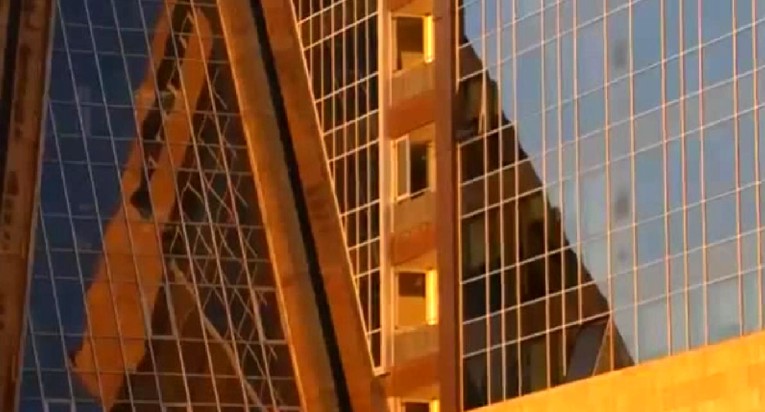
[Above: Sun hits the facade of of one of the most modern courtrooms in Europe]
5. Andre Vogt’s Excellent Post-Court Reporting In The Week
From Amanda Knox’s fugitive fears: she’s right to be worried
Sources close to defence lawyers confide that they, too, fear it may not go their way.
It didn’t help that Knox ignored her lawyers’ pleas to travel from Seattle and attend court in Florence - she sent an email instead - nor that she repeatedly requested to meet the Kerchers, only to be sternly rebutted by their lawyer, who suggested she act more like a defendant.
Then she started a new blog and began blithely responding to comments ““ most recently posting an admission that she had once faked a break-in as an April Fool’s prank before she left for Italy (a staged burglary is a key part of the case against her).
Have the wheels come off Knox’s public relations machine now that she’s safe in Seattle? She may need them again soon, because this appeal differs radically from the first one in 2011 which resulted in her acquittal, but which was harshly criticised and eventually annulled by Italy’s Supreme Court earlier this year.
There are three good reasons why this trial is different ““ and why Knox has reason to be nervous:
First, her co-defendant Raffaele Sollecito’s lawyers have distanced his defence from Knox’s. “He may have brushed her hair and cleaned her ears, but he would not have killed for the love of Amanda,” his lawyer Giulia Bongiorno told jurors in closing arguments earlier this month. “Turn off Amanda,” she said. “Raffaele is not Amanda’s other half.”
Second, the uncompromising Perugia prosecutor Giuliano Mignini has stayed away from Florence. Without him in court as a convenient villain, the “innocent American abroad being railroaded by a rogue prosecutor” narrative no longer holds water. The Florentine prosecutor, Alessandro Crini, has distanced the state’s case from the always controversial kitchen knife that may or may not have been the murder weapon. He’s also given less credence to the “˜sex game gone wrong’ theory that was central to the prosecution case in the first trial. Instead he’s considered all the evidence as a whole. There might have been a fight about missing money and hygiene, he said, but motive doesn’t matter: murders happen all the time for banal reasons. And convictions happen on much less evidence.
Third, the strict Florence judge, Alessandro Nencini, has curbed all antics by lawyers, public and media. There are no perp walks with popping flashbulbs this time. However the appeal ends, no one can argue that this trial wasn’t professionally managed.
4. Tweets by freelance reporter Andrea Vogt
14. Sollecito defense on bra clasp: For us, the condition of the room and conduct of the forensic police tells us there was contamination.
13. Judge interrupted Sollecito lawyer with a booming “No!” saying wiretapped conversations of Sollecito family not to be discussed this trial.
12. Maresca: Whatever you decide, we believe justice will be done & all elements considered in depth. We will serenely accept your decision.
11. Kercher attorney Maresca: Perugians reacted angrily to amanda knox acquittal because it was scandalous: acquittal was decided in advance.
10. Fabbiani, attorney for Meredith’s brother, urges court to look beyond motive. Perna for her sister: one person alone did not kill Meredith.
9. Lumumba attorney Pacelli concludes with this phrase to the jury: “Convict liar Amanda, the diabolical slanderer.”
8. Presiding Judge Nencini has cut Pacelli’s amanda knox monologue short. Says going off track. Pacelli promises to finish in 5 min.
7. Lumumba’s attorney Pacelli is delivering a vitriolic rebuttal on amandaknox - mixing his unbridled contempt w/her own statements.
6. Prosecutor asks (in case of conviction) cautionary measures so defendants can’t flee. Options are: passport, house arrest or arrest.
5. Prosecutor Crini: a lack of motive does not equal proof of innocence.
4. Trial back in session after “pausa caffe” during which Sollecito and his accusers were in tiny court coffee bar at same time. Only in Italy!
3. Sollecito attorney: The only things certain are the death of Meredith Kercher and the presence of Rudy Guede in the house that night.
2. Sollecito attorney: This case is an anomaly. Various judges interpreted facts differently over the years. There’s reasonable doubt.
1. In court, Sollecito attorney Maori contesting prosecutor’s arguments point by point. Knife, bathmat, alibi, witnesses. Afternoon rebuttals.
3. Tweets by our main poster Machiavelli
[At this point Machiavelli signed off]
62. Crini: Nencini asks the clerk’s officer to write down formally the exact terms of prosecution request to issue cautionary measures [if verdict guilty]
61. Crini says his conclusions are unchanged. Prosecution suggests arrest decrees are issued immediately if defendant(s) is(are) guilty
60. Crini points out the crime and motive originate from group dynamic.
59. Crini: Bongiorno had pointed out that anyway Sollecito should be accounted only for what he had done (implicit: not what Knox did)
58. Crini: The excessive and too quick reaction to a situation of rising argument is typical of group reaction.
57. Crini: Argument about cleaning was also reported by Meredith to her father John Kercher
56. Crini: Massive rejection of English [girls] testimonies is “weak” on the part of defence; tensions and dislikes in the house are recorded on paper
55. Crini: Movite cannot be assessed preliminarily as if it was a piece of evidence to be discussed
54. Crini: if you need to prove a crime, it is opportune to detect a motive, but a motive is only a plausible conjecture not basis for deduction
53. Crini: Bongiorno called all English girls ‘unreliable’ (because English, maybe coached by lawyers etc.)
52. Crini calls ‘amusing’ Bongiorno comparing her client with captain Schettino
51. Crini: Some thoughts about the motive.
50. Crini: It makes no sense to say the large kitchen knife is ‘incompatible’ with the big wound.
49. Crini: To the court: can you imagine a ‘surgical operation’ with a small knife producing a wound with clear margins on a live struggling victim?
48. Crini: it is difficult to produce an 8x8 cm large wound with a small 8cm long knife, it would produce at best a wound with irregular margin
47. Crini: The blade hypothesized by defence from the bed sheet stain is anyway larger; these are anyway conjectures. Datum is compatibility
46. Crini: thinking you can preemptively deduce the size of the blade from bed sheet stain is ‘unrealistic’
45. Crini: The “double knife theory” is based on the small size of the right wound, experts point to a likely much smaller knife with thin blade.
44. Crini: no defence wounds, no fight bruises, nothing under nails, bruises indicate forced restraint of victim; how she was immobilized
43. Crini: Massei court did not decide about attribution of pillowcase shoeprints, Crini objects Vinci’s finding, thinks prints are too small
42. Crini: Knox defence: says when Guede leaves palm print on pillowcase leaves a signature
41. Crini: Bongiorno called the murder scene “flooded” with Guede’s DNA. Crini points out his traces in room indicating he had free hands (no weapon)
40. Crini: The defences also dealt thoroughly with the use of the knife, wounds, blade size
39. Crini: The dynamic of the crime. Maori attributed all traces to Rudy Gede alone
38. Crini: All alleles of the victim were found in a scratch on the knife blade. Human DNA is normally not on knife blades
37. Crini: Vecchiotti admitted there was a scratch on the blade
36. Crini: The same defence experts did not object to the attribution Y haplotype of Guede found in the victim’s vagina
35. Crini: Calls Vecchiotti’s reasoning on bra clasp “a priori”, dismissed for reasons totally general and vague. Doesn’t read Y haplot. and X together
34. Crini: Points out a passage where Vecchiotti’s report misquotes police findings inserting the word “only”, built a strawman
33. Crini says let’s look at the Conti-Vecchiotti report, to see what it says, if you can subscribe with the report.
32. Crini: Tagliabracci in 2008 objected to quotes of prof. Gill calling them “too recent”
31. Crini: Objections referred to Low Copy Number are obsolete, and also partly undermined by the RIS report
30. Crini: Calls “embarassing” Bongiorno when alleges the police was wrong in attributing stains to cat’s blood
29. Crini: Disproves Bongiorno’s allegation that the clasp was stepped over.
28. Crini: Novelli rules out there was contamination in laboratory, as well as tertiary transfer in situ.
27. Crini is “pleased” the defence did not attempt to allege laboratory DNA contamination. Points out findings by Novelli
26. Crini: report says had there been internet surfing or writing activity, this would have resulted as obvious.
25. Crini cites arguments about computer expert reports, hearings of 14 Mar 2009 and Dec 2010 say further investigation is unnecessary
24. Crini: Maori omits to quote pieces of Curatolo’s testimony.
23. Crini will deal with Maori’s “theory of alibi” only very briefly
22. Crini says defence arguments on bathmat print are conjectures. Rinaldi is actually same person who correctly attributed shoeprint
21. Crini: Bathmat print: compatibility assessment can be done on what is measurable
20. Crini: Guede knew the hous and apartments, would have chosen logical entries and logical behaviour, Crini calls burglary theory ‘not credible’
19. Crini: alleged small wounds on Guede’s hand, inconsistent with absence of his blood on scene
18. Crini: Talks about Bongiorno’s criticism to staged burglary scenario - the scenario of Guede already inside apartment
17. Crini says police report timings, records of CCTV video camera and phone calls are ‘consistent’
16. Crini does not see corroboration of alleged 7-minute late clock error of CCTV. The 13.29 call was from Carabinieri HQ and don’t change anthg
15. Crini tris to “strain” the timing of police arival to favor the defence, to see if scenario fits. Considers possible CCTV time error
14. Crini: Sollecito calls Carabinieri too late, also because last phone call to Romaneli was at 12.38
13. Crini: Call to Sollecito’s sister, and then Sollecito’s call to Carabinieri at 12.51-45. Crini: this timing is late independently from Battistelli
12. Crini: Battistelli arrives on foot about 10 minutes eariler than postal police car
11. Crini wants to look better at some arguments about Sollecito’s declarations to postal police. Battistelli recalls 12.35 consistent with CCTV
10. Crini talks about Sollecito ‘sidetracking’, talking about statements to postal police
9. Crini: Knox’s Calunnia also contains details that have external corroboration and she could not have deduced from simple burglary scenario
8. Crini: A Calunnia is itself incriminating (require strong defence explanation), but Knox’s Calunnia also contains furth incrimiating details
7. Crini: Knox maintained her calunnia against Patrick over a period of several days. Crini points out the logicality of Cassazione argument.
6. Crini: Knox statements: ‘Patrick had sex with Meredith’ and ‘there was a loud scream’ were new elements, unrelated to known facts and not retracted
5. Crini: On calunnia, Crini points out that there was an argumentation about Knox defence about usability of Knox’s statement. argument is wrong
4. Crini: Theoretically all defense points could be replied to, Knox’s Calunnia, Sollecito statements to police, the staged theft, the mat print; DNA evidence
3. Crini says he will talk briefly only about a few selected points, without repeating himself, and without discussing old arguments again
2. [After the break] Prosecutor General Crini begins to reply.
1. [After the break] Sollecito entering the court, asked what he expect, says “no comment”
2. Tweets by reporter Barbie Latza Nadeau
44. Judge especially hard on Sollecito sub lawyer, reprimanding her for introducing new arguments when she is only supposed to be refuting.
43. Sollecito sub lawyer argues no DNA from Meredith Kercher on bra clasp w/Sollecito’s DNA, failing to mention she was wearing the bra..
42. Six years of Kercher trials and some lawyers still pronounce the K in Knox.. “ka-nox” as Sollecito’s sub lawyer just did.
41. Kercher lawyers finished, now Sollecito lawyers up for rebuttal, but both his principal lawyers had to leave early.
40. Kercher atty Maresca: Perugians reacted angrily to Amanda Knox acquittal because it was scandalous: acquittal was decided in advance.
39. Kercher lawyers ask court to consider all the previous testimony they say proves more than one person killed Meredith Kercher.
38. Lumumba lawyer says his client has not received any of the €22k he is owed by Amanda Knox even though the slander conviction is final.
37. Judge reprimands Lumumba lawyer for veering off course, he is only to discuss slander aspect of case, not murder itself.
36. Lumumba’s atty Pacelli is delivering a vitriolic rebuttal on Amanda Knox - mixing his unbridled contempt w/her own statements.
35. Lumumba keeps referring to Amanda Knox as “the American”, says she had a penchant for drugs, alcohol, sex.
34. Lumumba lawyer calls Amanda Knox a “diabolical slanderer” “¦
33. Lumumba lawyer says Amanda Knox substituted Patrick for Rudy Guede.
32. Court back in session with Lumumba lawyer up. Sollecito back in court after break.
31. Prosecutor Crini: a lack of motive does not equal proof of innocence. Amanda Knox
30. Prosecutor focused on knife, says traces of Meredith Kercher and Amanda Knox are valid.
29. Sollecito staring at prosecutor as he delivers rebuttal, jury taking notes, judge listening intently, journalists trying to stay awake.
28. Prosecutor in new Amanda Knox appeal says motive in murder is never simple and clear, like murder itself is complex.
27. MeredithKercher lawyer says her brother and sister plan to come for verdict Jan 30.
26. Prosecutor just referred to Amanda Knox as “la nostra Knox” as he tries to refute defense arguments.
25. Trial back in session after “pausa caffe” during which Sollecito and his accusers were in tiny court coffee bar at same time.
24. Prosecutor making brief rebuttal, pushing Sollecito and Amanda Knox back together after Sollecito lawyer clearly tried to separate them
23. Sollecito just told group of reporters he was not sure if he would come for verdict.
22. Sollecito lawyer finished. Judge asks lawyers how much time they need for rebuttals. 15 minute
21. Sollecito lawyer says his client is not guilty. Does not mention Amanda Knox in final moments of closing arguments.
20. Sollecito atty: This case is an anomaly. Various judges interpreted facts differently over the years. There’s reasonable doubt.
19. Sollecito lawyer tells the court they can only accept that Meredith Kercher was murdered and that Rudy Guede is the lone killer.
18. Sollecito lawyer G Bongiorno has just arrived in court with three male assistants.
17. Sollecito lawyer says Sollecito was never with Guede, Meredith Kercher and Amanda Knox. Says testimony that they were was false.
16. Sollecito lawyer working to discredit witnesses. Says store owner who says he saw
15. Judge in response to Sollecito lawyer asking if jury is tired: if we are tired now we will have to kill ourselves by the end of the day.
14. Sollecito in court today. Will he come for verdict on 30th?
13. Sollecito lawyer lays out why homeless man in park who testified he saw Amanda Knox and Sollecito arguing night of murder is unreliable.
12. Patrick Lumumba also absent from court today.
11. Judge in Amanda Knox new appeal rarely looks at Sollecito lawyer, writing notes, scrolling tablet, but minimal eye contact.
10. Sollecito lawyer on mass media tangent, says the “super witnesses” for prosecution in earlier trials were all for show.
9. Judge in Amanda Knox 2nd appeal asks for clarification on hard to follow techie evidence.
8. Sollecito lawyer showing computer records for Raf’s computer access, says access was human, not automated. Jury squinting at slides.
7. Sollecito lawyer moves on to Raf’s computer, how computers belonging to Amanda Knox, Meredith Kercher were all “accidentally” destroyed.
6. Sollecito lawyer back on break in. Frequent reference to Guede “the real assassin”. No mention of Amanda Knox at all yet.
5. Sollecito lawyer focusing on staged break in.
4. Sollecito lawyer G Bongiorno not in court this morning.
3. Sollecito lawyer Maori says luminal also picks up fruit juice, not just blood. Judge taking notes.
2. Sollecito lawyer showing slides of famous footprint on bathroom rug in Meredith Kercher blood.
1. Sollecito lawyer now summing up in Florence, then rebuttals. Verdict expected Jan 30.
1. Tweets by reporter for La Nazione
46. Lawyer Colotti (Sollecito) : “In a process based on circumstantial evidence motive is the glue of the whole thing.”
45. Lawyer Colotti (Sollecito defense) begins.
44. Sollecito defense : “The Meredith’s bra clasp was contaminated as evidence “
43. Sollecito defense : “It was Rudy Guede who entered through the window after breaking the glass “
42. Sollecito defense : “There was no misdirection in statements of Sollecito “
41. Now it’s up to the defense again, Sollecito team begin their final responses
40. Lawyer Maresca (Kerchers) : “On the blade there are traces of the victim “”
39. Lawyer Maresca (Kerchers) : “Hellmann appeal, the acquittal was a pre-cooked judgment”
38. Lawyer Francesco Maresca (Kercher family) begins
37. Lawyer Perna (Kerchers) “Wounds on the body victim compatible with the knife found at Sollecito’s house “
36. Lawyer Perna (Kercher family) begins
35. Lawyer Vieri Fabiani , one of the lawyers for the plaintiffs, the Kercher family
34. Lawyer Pacelli (Lumumba) : “Judges, sentence the liar Amanda , the devilish slanderer “
33. Lawyer Pacelli (Lumumba) : “Meredith could not stand Amanda”
32. Lawyer Pacelli (Lumumba) : “Amanda is on Lumumba’s mind constantly “
31. Lawyer Pacelli (Lumumba) : “Amanda hoped Lumumba slander would not be discovered “
30. Lawyer Pacelli (Lumumba) : “the defense of Amanda was rancorous and non-existent “
29. Lawyer Carlo Pacelli (for the plaintiff Lumumba) begins.
28. Crini: “If Sollecito and Knox are condemned then precautionary measures should be decided to ensure execution of the sentence”
27. Crini: “There were tensions in the house for reasons of hygiene ”
26. Crini: “The absence of sure motive is not a defensive threshold “
25. Crini : “At the scene there was no contamination “
24. Crini : the prosecutor carries on his indictment reaffirming the validity of the clues
23. Crini : the prosecutor continues rebuttal, the Tuscany Attorney General Dr Tindari Baglione enters the court
22. Crini : “Slander of Lumumba in itself is an important element “
21. Crini : the Prosecutor General starts his rebuttal
20. Sollecito’s father::”That’s understandable , too much stress”
19. Sollecito :”I do not know if I’ll be in the courtroom on the day of judgment
18. This ends the argument of Maori (defense of Sollecito )
17. Maori: “The only possible verdict is an acquittal”# meredithnazione
16. Maori: “In the various processes motive , time, and the murder weapon changed ontinuously”
15. Maori: “The witnesses who say that Raffaele and Rudy knew each other, said things false”
14. Maori:”The witness Quintavalle for many days after the murder of Amanda did not speak”
13. Maori: “The witness Quintavalle speaks thirteen months after the fact”
12. Maori: “The witness Curatolo is unreliable , wrong date and report things that are false”
11. Maori: “Some witnesses have had access to financial sinecures”
10. Maori: “The witnesses are characters created by the mass media”
9. Maori: “At 21.26 Sollecito opened from his PC the cartooon Naruto”
8. Maori: “At 21.10 there was interaction Sollecito with his pc”
7. Maori: “Analysis of the computer shows that Sollecito ‘s alibi is true”
6. Maori: “No simulation , glass window broken by a stone from the outside. No glass outside”
5. Maori:”No simulation of theft. Blinds on window with broken glass were not closed”
4. Maori: “The bloody footprint on the bath mat is not Sollecito’s foot”
3. Maori: “Meredith was killed at 21”
2. Maori: “The kitchen knife is the murder weapon . Wounds are not compatible”
1. The hearing begins : now it’s up to the lawyer Maori
[Below: previous image of Attorney General Dr Tindari Baglione who is in court to hear Dr Crini]
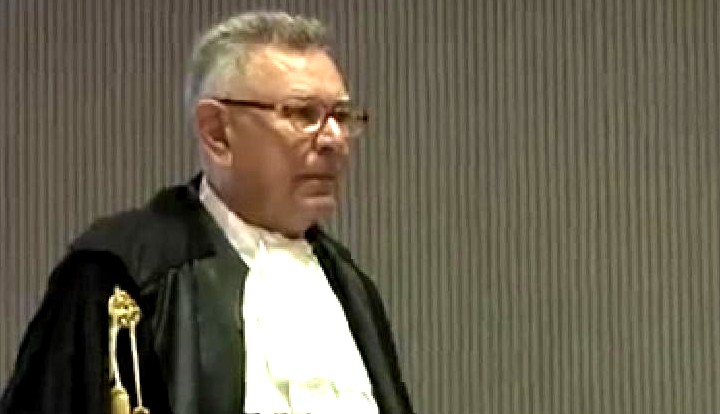
Saturday, January 18, 2014
False Claims In Bongiorno’s Summation: That The Wound “Proved” Sollecito’s Big Knife Was Not The One
Posted by Our Main Posters
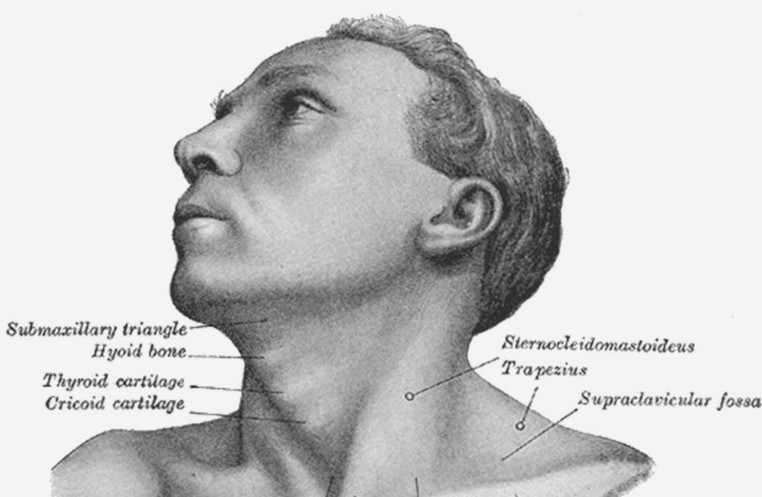
In defense summation on 9 January, nobody who really knows the case (such as Judge Nencini) would have bought many of Giulia Bongiorno’s outlandish arguments.
The post below this one illustrates how Bongiorno in about half her arguments tried to demonize and mischaracterize all of Perugia, as if somehow Perugia itself had become the real villain in forcing a rush to judgment and wrong conclusion. In fact Perugia took a huge hit from Meredith’s murder but has acted gracefully and competently ever since.
This post by several of us after discussion in Comments is the first of two on Bongiorno’s claims about the large knife. The second one will follow next week by Ergon.
There is no question in our minds but that this IS the murder weapon. It was proved convincingly by way of the DNA tests done by the Scientific Police and Carabinieri. Here we prove it by way of human physiology and the autopsy.
Waving two knives with a manic expression, Bongiorno claimed that the the large knife in evidence was far too large for the wound in question - and anyway, anyone intent on murder would have easily pushed the large knife right through so there was no intent of murder anyway. Bongiorno dismissed the possibility that hyoid bone could have somehow stopped the blade, prevented it from penetrating, as the bone is not resistant enough.
The surface location of the hyoid Bone is shown in the Illustration above; its front is only a few millimeters below the skin: The hyoid bone is loop-shaped like a C, open at the back; this Hyoid loop encloses part of the airway:
The hyoid bone curves around the upper airway at the base of the tongue, and is also called the tongue-bone or the lingual-bone. It is located between the mouth and the larynx; therefore during inhalation air passes through the hyoid loop before it passes through the larynx, and during exhalation air passes through the larynx before it passes through the hyoid loop.
The hyoid is an integral factor in the swallowing, breathing, and phonation mechanisms. If transected in such a way as to connect its part of the airway directly to the atmosphere, as it was in this case, swallowing, breathing, and phonation will be seriously impaired, as they were in this case.
The coexistent bleeding from the also-transected Right Superior Thyroid Artery accelerated Meredith’s death, more by the drowning-effect of inhalation of the blood into her lungs, than by the loss of circulating-blood alone.
Both the hyoid bone and the jawbone are mobile, which is why we can chew, swallow, talk, smile laugh, and sing, the way that we do, each of us in our own unique way.
The Massei Prosecution Reconstruction depicted the killers making cuts obliquely from behind.
The fatal cut started on the Left, but crossed the midline to the Right.
Both the Right Superior Thyroid Artery, and the nearby Hyoid Bone, were severed but from Massei, it is not precisely clear where the hyoid loop was severed, and it seems that the cut did not include the midline skin; The Florence Appellate Court will have access to the relevant records.
Here is why the hyoid could not have damaged any knife:
It is an old rule of materials-physics that a softer substance cannot even scratch a harder substance.
[To some people this may be counter to their intuition, so I have passed it by an eminent MIT physicist, and he agrees with me that the knife blade would not show signs of damage caused by the stabbing in this case.]
As pointed-out recently on TJMK, some confusion has arisen, caused by a quotation in the Massei Report, where on p371is written: “”¦a single blow was apparently halted by the jawbone”¦”
The statement that a blow could be “apparently halted” by Meredith’s jawbone is at best a figure of speech, and the quotes of Prof Cingolani on page 152 of the Massei Translation clearly indicate that any cause and effect inference from the phrase “apparently halted by” did not mean it was stopped-by the jawbone:
Prof Cingolani “did not, however, have elements of certainty to establish that the blade which had caused the wound 4 centimetres deep had stopped at the said depth because [it was] stopped by the jawbone.”
Maybe there is a Judicial, translational, or typographical glitch and “by” the jawbone should have been “at” the jawbone.
Skin is soft and bone is harder but there is no way that the knife striking the jawbone would halt the knife in this case, the jaw would just roll with the strike, depending on the angle of attack. [The force was not even enough to mark the jawbone itself!]
Furthermore, contact between the knife and jawbone or hyoid bone would not mark the knife because living-bone is softer than the knife.
When your pet gnaws on a non-living cow-bone, neither the bone nor your pet’s teeth can bend; both your pet’s teeth and the bone can be broken or dislocated, and the bone gets scratches on it because it is still softer than the teeth, but your pet’s teeth do not get scratches on them, because they are harder even than the non-living bone.
If someone is stabbed in the back with a kitchen carving knife, penetrating ribs on its way to the heart, the knife may have no scratches at all, nor show any signs of damage caused by that action.
[Look at your own kitchen carving knife. It probably has no marks caused by striking chicken thigh bones. It will have fine parallel scratches created in the manufacturing process.]
Any implication-in, or inference-from the statement quoted above that stabbing Meredith’s neck with enough force to penetrate the layers of her neck and then strike bone would have the effect of signs of damage to the knife-blade is a figment of an uninformed imagination.
The kitchen-knife, found in Sollecito’s apartment, with Meredith’s DNA on the blade and Knox’s DNA on the handle, is the weapon that killed Meredith.
Wednesday, December 18, 2013
Demonizations By Knox: Multiple Ways In Which Her Email To Judge Nencini Is Misleading
Posted by FinnMacCool
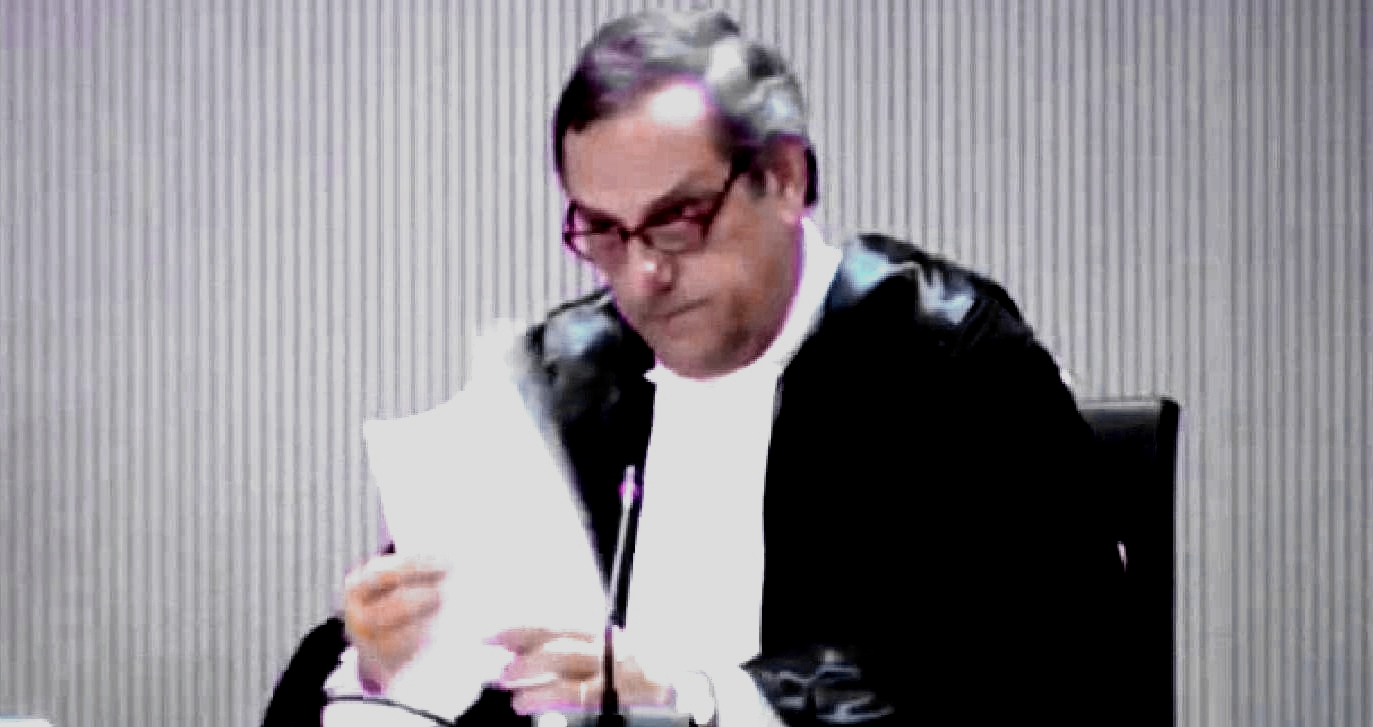
You can read here the email Amanda Knox sent to Judge Nencini.
It is dated 15 December 2013 and was handed to Dr Nencini by Dr Ghirga, apparently to the disdain of both of them. It contains many statements which, if she were under oath, could be considered perjury.
One telling point is that she claims “I am not present in the courtroom because I am afraid.” Her co-defendant, Raffaele Sollecito, was not at all afraid of being at their own appeal, and he did present himself at an earlier stage of the proceedings.
He made a spontaneous statement and the judge assured him that he should feel free to intervene to make further interventions whenever he wished. So far he hasn’t wished to - he preferred to head back to the Caribbean for his holiday.
But that event and that presence by Sollecito completely undermine the credibility of Knox’s claim that she feels afraid of the court proceedings. As it is her own appeal, there would be nothing to stop her coming and going, at any stage, just as Sollecito did.
I have no doubt that my lawyers have explained and demonstrated the important facts of this case that prove my innocence and discredit the unjustified accusations of the prosecution and civil parties.
That’s what her lawyers were about to try to do. But instead they had to hand this email to the judge, showing their client’s complete contempt for the court process.
I seek not to supplant their work
She doesn’t want to supplant the work of her own lawyers? Most defendants don’t, nor do they feel the need to tell the court that using an archaic seventeenth-century grammatical construction (where modern English would have “I do not mean to…” or “I do not wish to”).
Because I am not present to take part in [my own appeal], I feel compelled to share.
As Judge Nencini said, if anyone wants to talk to a court, come to that court. Knox chose not to be present, which means that the word “because” is not a logical connector for why she feels compelled to share what she thinks. “Even though” would make more sense.
The Court has access to my previous declarations and I trust will review them…
The court has access to thousands of pages. Everybody trusts that courts will review the evidence before passing judgment - that’s how the legal process works.
I must repeat: I am innocent.
In fact, she does not have to repeat that, which is simply a reiteration of her not-guilty plea.
I am not present in the courtroom because I am afraid.
The wording is reminiscent of a previous declaration, “I am very afraid of Patrik, the African boy who…” Also the court may remember the presence of her co-defendant, who made a brief presentation to the court (and was invited to intervene again at any time he saw fit) and who afterwards flew back to his extended vacation in the Dominican Republic. It is difficult to see what the defendants have to be afraid of from the court - except perhaps the truth.
I am afraid that the prosecution’s vehemence will leave an impression on you, that their smoke and mirrors will blind you.
The prosecution’s case has already been made; this was the opportunity for the defense to make their case. It is the court’s duty to consider the evidence without being overly swayed by the vehemence of lawyers from either side - they look at the facts, and pass judgment based on that, and this happens in literally millions of cases every year. (Cassazione alone reviews more than 80 thousand cases each year.)
This is not for lack of faith in your powers of discernment, but because the prosecution has succeeded before in convincing a perfectly sound court of concerned and discerning adults to convict innocent people - Raffaele and me.
The second half of the sentence contradicts the first. The writer is explicitly stating that she doubts that the court has sufficient powers of discernment to be able to see through the prosecution’s arguments. Her justification for saying this is simply that it has happened before, with a previous court.
I’ve attentively followed this process and gleaned the following facts…
This is a delusional statement. The writer is the appellant, the initiator of the process, not an external observer to it. We can compare it with her statements following her arrest, in which she claimed still to be helping the police on an equal basis with them, despite being charged with the murder.
No physical evidence places me in Meredith’s bedroom, the scene of the crime…
The bedroom is where the murder took place, but the crime scene is much wider than that, and certainly encompasses the adjoining room where the burglary was faked, the bathroom where the killers cleaned up, and the corridor that connects those rooms. Knox’s blood, DNA, bare footprints are all found in those places. Within Meredith’s room itself, there is also a woman’s shoeprint that does not match the victim, and which Knox’s own lawyer was obliged to claim was caused by an unfortunate fold in the pillowcase.
Meredith’s murderer left ample evidence in the brutal scenario: handprints, footprints, shoe prints in Meredith’s blood, DNA in her purse, on her clothing, in her body.
The term “brutal scenario” makes no sense here, although she repeats it again a couple of lines later. Perhaps she means “crime scene” or “bedroom”. The only footprints found at the crime scene are those of Knox and Sollecito. A woman’s shoeprint in the room where the murder took place cannot be that of either Guede or the victim, and is most likely that of Knox.
The prosecution has failed to explain how I could have… been the one to fatally wound Meredith ““ without leaving any genetic trace of myself. That is because it is impossible.
Actually it is perfectly possible to do this ““ for example, simply by stabbing someone to death while wearing gloves. However, in this case the prosecution has in fact explained how several traces of Knox’s DNA have been found on the handle of the knife which had the victim’s DNA on the blade. That obviously fits a scenario in which Knox stabbed Meredith Kercher with that knife.
Either I was there, or I wasn’t.
The same thing applies to the appeal court. Either the defendants are there, or they are not. In this case, the defendant is not.
The analysis of the crime scene answers this question: I wasn’t there.
Knox’s footprints, blood and DNA, sometimes mixed with that of the victim, all place her at the crime scene, and so does her DNA on the handle of the murder weapon.
My interrogation was illegal and produced a false “confession” that demonstrated my non-knowledge of the crime.
“Non-knowledge” is a curious word. Knox’s witness interview was perfectly legal ““ it was only the unexpected confession from the witness that changed the status of that interview, so that its contents could no longer be used against her. But there is no question over its legality.
The subsequent memoriali, for which I was wrongfully found guilty of slander…
This is an extraordinary aside. The defendant is here rejecting the legitimacy of the Italian Supreme Court, which has definitively found against her, and is also rejecting the findings of the Hellmann court that provisionally freed her, pending appeal. Every single court has found against her on this count.
. ...did not further accuse but rather recanted that false “confession”.
Let us reread some excerpts from this supposed recantation: “After dinner I noticed there was blood on Raffaele’s hand… I stand by my statements that I made last night about events that could have taken place in my home with Patrik… In these flashbacks I’m having, I see Patrik as the murderer…Why did I think of Patrik?... Is there any other evidence condemning Patrik or any other person?” This is not a recantation, and it does in fact contain further accusations of Patrick Lumumba while also seeking to throw suspicion both on Sollecito and an unnamed “other person”.
My behavior after the discovery of the murder indicates my innocence.
As dozens of witnesses have testified in a series of trials and appeals, Knox’s post-murder behavior indicated the exact opposite, which is why suspicion fell on her in the first place.
I did not flee Italy when I had the chance.
On page 71 of her memoir, Knox recounts the following exchange with Officer Ficarra, on the day after the murder was discovered: “My parents want me to go to Germany to stay with relatives for a couple of weeks. Is that okay?” She said, “You can’t leave Perugia. You’re an important part of the investigation.”
I stayed in Perugia and was at the police’s beck and call for over 50 hours in four days.
Chapter Ten of her memoir gives her own account of what she did on Monday, November 5th. She went to a nine o’clock grammar class, at which she refused to discuss the case with her fellow students; she spoke on the phone with her Aunt Dolly, admitting that she had not yet contacted the US embassy; she bumped into Patrick Lumumba where she refused to talk to BBC reporters; she spent the afternoon with Sollecito and then accompanied him to a friend’s house where she played the ukulele. Far from being at the police’s beck and call, she ignored their request that she stay home while they interview Sollecito separately, and turned up to the Questura regardless, although not before they had finished their evening meal.
The police coerced me into signing a false “confession””¦.
Her false accusation of Patrick Lumumba, for which she was convicted and has already served four years in prison, was not a confession and was not coerced.
. “¦one may be coerced into giving a false “confession” because of psychological torture”¦ This is a universal problem.
The US-based Innocence Project reports that there have been 244 exonerations since 2000, which is just over seventeen per year, which in turn means that currently in the USA, roughly 0.1% of cases are eventually overturned. Being wrongfully convicted might be devastating for the person concerned, but it is not a universal problem.
I did not carry around Raffaele’s kitchen knife.
The defendant has not been accused of carrying the knife around, but rather of stabbing Meredith Kercher to death with it. Forensic evidence supports that accusation, too.
I had no contact with Rudy Guede. Like many youth in Perugia, I had once crossed paths with Rudy Guede.
Very typical of Knox’s writing is this kind of self-contradiction, sometimes occurring within the same sentence, or as in this case, in consecutive sentences, seemingly with no self-awareness that any contradiction has even occurred.
If the prosecution truly had a case against me, there would be no need for these theatrics.
The prosecution is present in the court, having made its presentation in the usual way. The defense lawyers are about to do exactly the same thing. The only theatrics happening in the court at that moment is a bizarre email sent by one of the defendants, in lieu of attending her own appeal to her own murder conviction.
But because no evidence exists that proves my guilt, the prosecution would seek to deceive you with these impassioned, but completely inaccurate and unjustified pronouncements.
No further comments.
Monday, December 16, 2013
Appeal Session #6: Case For Knox’s & Sollecito’s Guilt - The Civil Parties
Posted by Our Main Posters
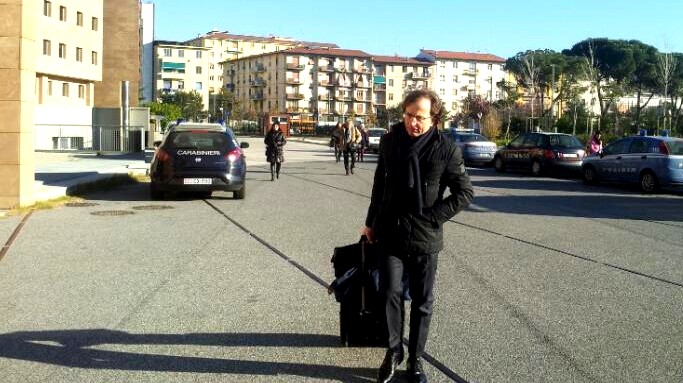
[Above, today: Dr Maresca, the Florence lawyer who speaks for the victim, arrives at the court]
7. Court resumes tomorrow
Court will resume at 9:30 am Italy time with the first of the summations for the defenses. When they conclude, probably in January, the prosecution will have a chance of rebuttal.
6. Reporting in English
Andrea Vogt has posted a detailed report from the court at The Freelance Desk, Scroll down to the heading “Update Dec 1t 2013”
5. Reporting in Italian #3
Amanda Knox and Raffaele Sollecito, accused in the murder of British student Meredith Kercher, were in the grip of a “murderous rage” fuelled by illegal drugs and alcohol, a lawyer for the victim’s family said Monday. Knox, Sollecito and a third person definitively convicted of the crime, Rudy Guede, had “no inhibitions” because of the drugs and alcohol they ingested before murdering Kercher in November 2007, charged Vieri Fabiani.
Only later did the “fear take over” and led to false explanations including a simulated break-in and robbery, and a false accusation against a bar owner in Perugia, where the murder occurred, added Fabiani. A Florence court is trying the case against Knox and Sollecito, who have been on trial twice before for the murder of Kercher. Both have said they are not guilty of the accusations.
Guede was convicted in a fast-track trial and is serving a 16-year sentence in the murder, but Italy’s top appeal court said it was unlikely he acted alone. Knox, who is in the United States and has not returned for this trial, and Sollecito each served two years in prison after a lower court convicted them of murder in 2009. An appeal court overturned those convictions in 2011 and in March, Italy’s highest court sent the case back to the appeals stage over aspects of the evidence it argued had not been properly examined before.
The supreme court ruled that the initial forensic evidence had been wrongly dismissed in the acquittal and a prosecution theory about a sex game that went wrong should be re-examined. Kercher, 21, was found dead on the floor of an apartment she shared with Knox on November 2, 2007. Guede’s DNA was found inside Kercher, on her clothes, and elsewhere in the apartment.
Fabiani said that a motive for the murder was “irrelevant” because the crime was committed while the trio were abusing substances. An Italian prosecutor has requested a 26-year prison term for Knox and Sollecito for the murder, plus a further four years for Knox for allegedly slandering bar owner Patrick Lumumba, whom she initially implicated during tough police questioning before later retracting, saying she had been confused.
The new trial opened in Florence in September, and a decision is expected on January 10.
Translation by The 411
4. Reporting in Italian #2
For the Kercher family it is “intolerable” that Amanda Knox on her website is issuing “invitations to collect donations in memory of Meredith” declared Dr Francesco Maresca, the lawyer for the parents and siblings of Mez, speaking in the Assize Court of Appeal of Florence, where judicial process continues for the murder of the young British student Meredith Kercher, which occurred in Perugia on the night of November 1, 2007 .
Dr Maresca asked the Court “to forget the opposing sides and all that is foreign to the process”, meaning the media coverage of the controversy being generated in the U.S. in the legal defense of Knox, as they should also “forget the statements made in court a few weeks ago by Raffaele Sollecito, who is now returned to a “vacation” in Santo Domingo”
Dr Maresca also pointed the finger at Knox for her book, for which she signed “contracts in the millions” and also retains “a person to handle public relations”. Finally, he invited the Court to also forget “those journalists who are inspired by the freedom of delirium and not the freedom of the press.”
Many elements confirm the original verdict. “We have no doubts about the guilt of the accused - there are so many elements to confirm the sentence”.
The family of Meredith Kercher, said the lawyer, will be in Florence on the day of the judgment of the appeal for the murder of the young British student by the defendants Amanda Knox and Raffaele Sollecito .
This was a heinous crime committed knowingly. “We ask the Court for truth and justice for a heinous crime committed with precise awareness and desire” said the lawyer Vieri Fabiani, one of the lawyers of the Kercher family… “The defendants Amanda Knox and Raffaele Sollecito and Rudy Guede, in the process of killing Meredith Kercher, were “excited and a murderous rage was triggered” because, with the drugs and alcohol taken ” their minds were free of inhibitions”.
Fabiani focused in particular on Rudy Guede also convicted for the murder of Meredith, recalling that the judgment was delivered after the first degree trial in Perugia [in October 2008]. And on the verdict against Guede, Fabiani stated that he was sentenced in collusion with another two who “accidentally” have been identified as Sollecito and Knox, whose responsibility and presence on the scene of the crime are well documented.
Fabiani called Sollecito and Knox persons of “high criminal capacity” who have created the picture of a crime without serious motive. Then after the murder “fear, terror, took over and they set out to simulate a theft, frame Patrick Lumumba, to mystify, however clumsily, to banish from their minds the crime they committed.”
Fabiani argued that the presence of two defendants in the house on Via della Pergola that evening, and their willingness toward murder, were strongly demonstrated.
“The motive becomes irrelevant,” even if it can be identified “in the issues between Amanda and Meredith, which evolved into a sort of punishment of the victim, in an escalation”.
3. Reporting in Italian #1
Amanda Knox, Raffaele Sollecito and Rudy Guede were ” excitedly and this unleashed their homicidal rage ” that tragic night between the first and November 2 of 2007. Vieri Fabiani, one of the lawyers of the Kercher family, during the appeal session in Florence about the murder of Meredith Kercher .
Because of drugs and alcohol their minds were “devoid of inhibitions ,” argued the lawyer, according to whom the defendants should be considered ” persons of a high criminal capacity .” After the murder, fear took over, then they get to simulate a theft, to accuse Lumumba, to mystify to banish from their minds the crime they committed.”
The lawyer explained that the presence of the two defendants at the crime scene and their willingness to commit murder was strongly demonstrated. “The motive becomes almost irrelevant, even though important elements can be identified” in the problems existing between Amanda and Meredith, which “evolved into a sort of punishment of the victim in an escalation”.
For the Kercher family it is “intolerable that Amanda Knox on her website makes invitations to collect donations in memory of Meredith” added the lawyer Maresca. He invited the Court ” to forget the opposing sides and all that is foreign to the process.” The court should “forget” the statements made in court a few weeks ago by ” Raffaele Sollecito who has returned to “a vacation” in Santo Domingo
Avv Maresca also pointed the finger at Amanda and her book thanks to which she ” has signed contracts making her a millionaire.”
2. Tweets from La Nazione
10. Amanda knows the mode of the crime because she was present
9. Motive is irrelevant, the presence of the accused at the scene of the crime is proven
8. Amanda and Raffaele in the grip of the excitement and this triggered the murderous rage
7. It is not sustainable that Rudy Guede is the only murderer
6. The lack of motive is irrelevant, there is evidence of homicidal intent
5. The ruling of the Supreme Court crushed the acquittal of appeal
4. Amanda knew the mode of the murder
3. On the knife found at Sollecito’s house there was the DNA of the victim
2. Contamination of the bra clasp is false (invented)
1. Meredith proceedings: hearing begins. Lawyer Vieri Adriani for the victim family to speak first
1. Tweets from Freelance Andrea Vogt
5. Courtroom nearly empty for closing args of lawyer representing meredith kercher family. Not much interest in their quiet suffering.
4. Maresca: “While we’re here in trial, Sollecito in Santo Domingo & Knox in US taking online donations for victim she’s accused of killing.”
3. Kercher attny Serena Perna: Meredith’s many wounds in many places (from bare hands,from knife, yet not defensive) = multiple attackers.
2. Kercher attny: Motive, or lack thereof, is absolutely irrelevant.1000 different problems could have led to fatal escalation of violence.
1. Right now lawyers for the civil parties (specifically Kercher family) giving closing arguments. Defense is to follow.
[Below: two images in the courtroom from previous sessions]
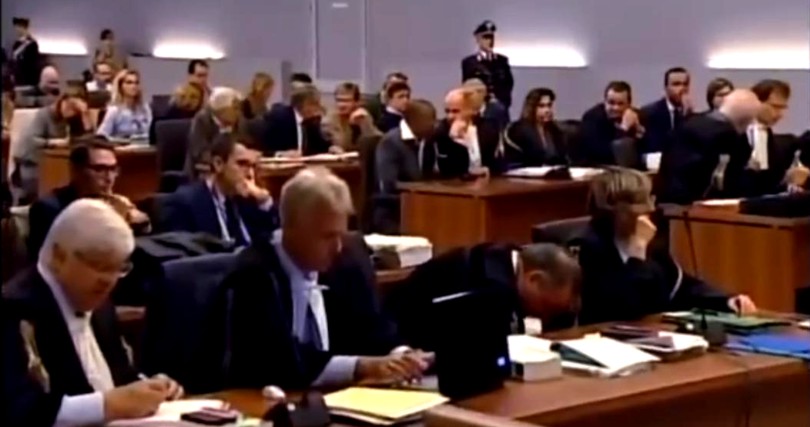
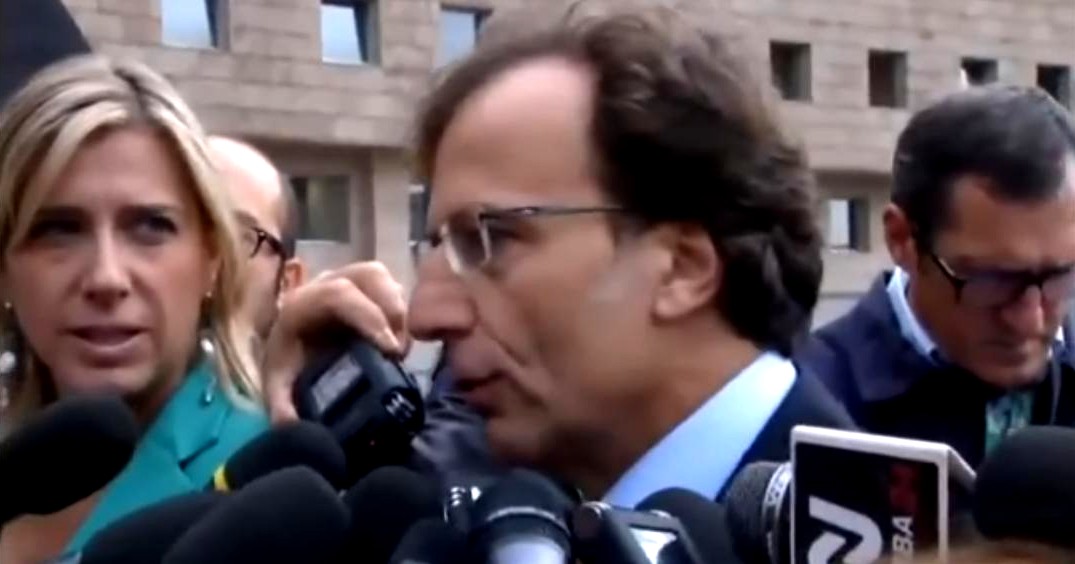
Saturday, December 14, 2013
Why Is Appeal Prosecutor Crini So Very, Very Interested In The Precise Position Of Filomena’s Door?
Posted by Cardiol MD
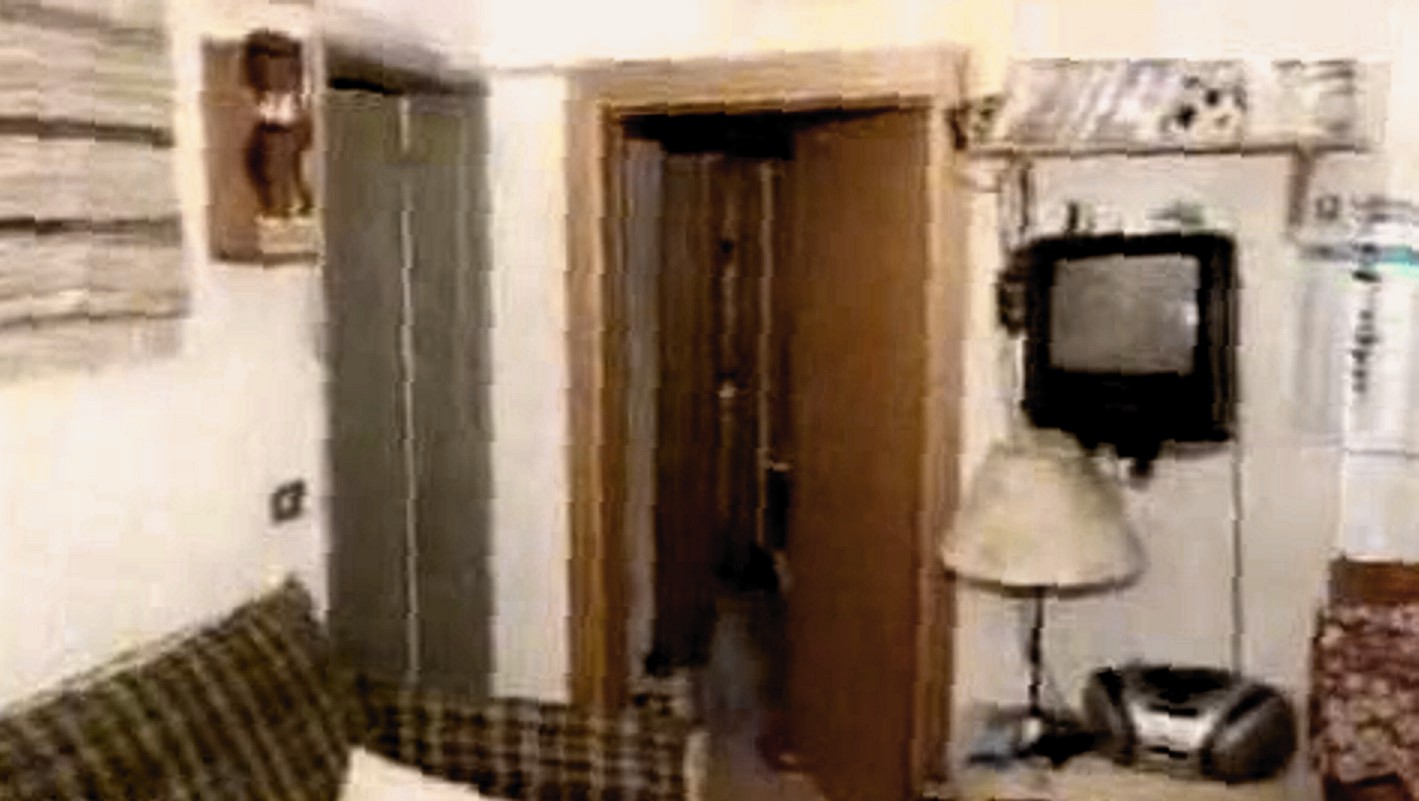
[Above, we can see Filomena’s grey door, at hard left; ahead are Meredith’s & Knox’s bedrooms]
Do please bear in mind that this appeal was initiated by Knox and Sollecito, and the verdict, sentence and sentencing report they dispute is Judge’s Massei’s from the 2009 trial.
The subject of one of Dr Crini’s focuses - whether or not Filomena’s door was open at the various times Knox and Sollecito stated they went to the women’s apartment on the morning-after ““ is a crucial one, relevant to proving Knox’s and Sollecito’s lies and obfuscations.
Wasn’t the staged break-in to Filomena Romanelli’s room glaringly obvious? In the early morning of November 2nd, 2007? In spite of the Knox/Sollecito obfuscations? There is much information in Massei on this question, pointing to many very obvious obfuscations.
Now, for the legal requirements of beyond-reasonable-doubt (BRD) actual, literal quotations are needed. Much relevant information can easily get “˜lost in translation’ not only at the superficial level of paraphrase, as in “They said that”¦..”, but also at the more subtle level of the formats used for quotations.
Some of the Massei Report as translated consists of the actual oral quotations of witness statements, some are quotations of the content of written documents, but some consist only of paraphrases of both oral statements and of written documents.
For some quotations, especially nested-quotations the translation uses various formats, beginning either with a comma or an apostrophe, ending with an apostrophe, and, in my copy, some back-slashes.
This mixture can be confusing to some readers, and Knox and Sollecito are seasoned veterans of exploiting such translational losses. That is a major factor in their continuing obstruction of justice: using chronic obfuscation.
He said, “She yelled, ‘I’m going to kill you.’ “
This quotation-format has been substituted in this post where it seems appropriate. It is hoped that when this format is used only to indicate editorial irony it will be self-evident.
John Follain and Will Savive also make a number of relevant references, and so do some Wiki articles whose authors are too modest to identify themselves though “˜Underhill’ has been mentioned as a co-ordinator.
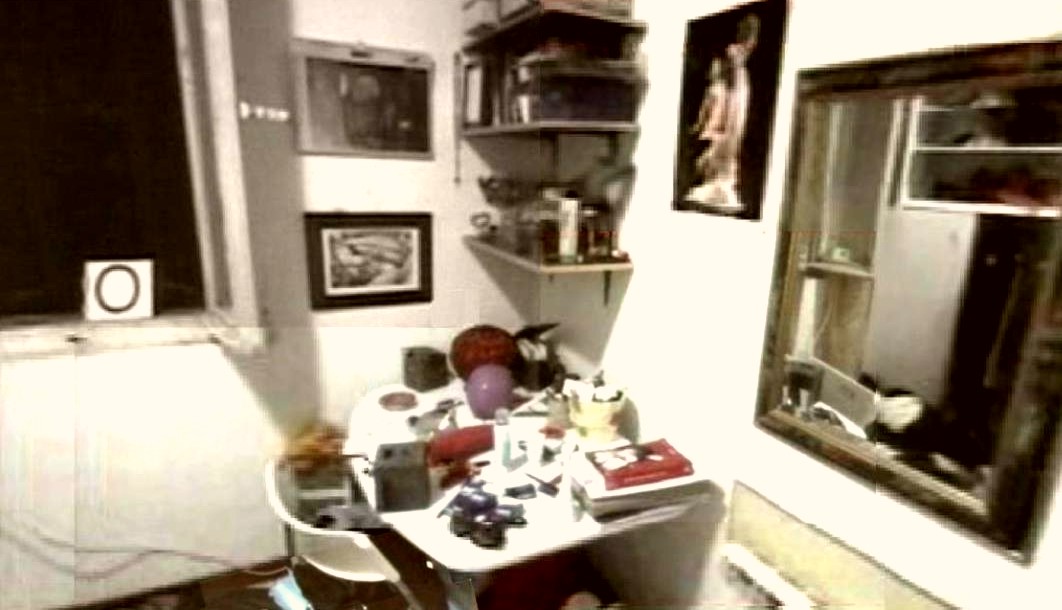
Of course, the members of the Florence Appellate Court have access-to, have probably already read, thousands of pages of evidence, including the actual verbatim witness-transcripts, and that Court will make up its own mind independent of what is written elsewhere.
Here are some of the Massei “˜door’ instances - this is a selection of a relevant 6 out of a grand total of 192 instances:
Massei Page 28: [Amanda Knox and Raffaele Sollecito ““ said that they were waiting for the carabinieri whom they had called since “coming back to the cottage in the morning because they had been away for the night” and finding “the entrance [15] door open and then the window broken” (see declarations by Battistelli, hearing of February 7, 2009, page 64).]
Access to the Court Records would help us better-understand this passage, but Follain (Page 67, Kindle location 939), indicates that Battistelli is actually quoting Sollecito, substituting “˜they’ for “˜we’, so it seems that Sollecito was already obfuscating the facts, encouraging the inference that their shocking observations began only when both he and Knox arrived together and discovered together both the open apartment entrance-door, and from inside Filomena’s room, the broken-window, so we are all being steered away, by Sollecito, from the true answer to our question.
Massei Pages 29-30: [Around midday(Nov, 2nd, 2007), at ten past twelve, when they had not yet arrived at the car park of the Fair, and she(Filomena) was in the car with her friend Paola Grande, she received a phone call: it was Amanda letting her know that there was something strange. She had arrived and had found the door open: she had had a shower and it had seemed to her that there was some blood; moreover she said that she was going [17] to Raffaele’s place (declarations of Romanelli page 31, hearing of February 7, 2009).
To her (Filomena’s) question about where Meredith was, she had answered that she did not know.]
Filomena had apparently not been told by Knox, in this 1st phone-call, about the broken pane, the stone, and the bedroom-disarray, as if Knox was not yet aware of these stunning facts. The obfuscation continues.
Massei Page 30: [Marco Zaroli, who was without a car because Ms. Romanelli had taken it, had called his friend Luca Altieri and they had gone together to the house in Via della Pergola, where they arrived around 1:00 pm, at almost the same time as Filomena Romanelli and Paola Grande. In the house there were the also the two present accused and ““ as we have seen ““ Inspector Battistelli and Assistant Marzi. The presence of the latter two was linked by Ms. Romanelli to what Amanda had told her about the open door, the broken pane, her own room in a mess.]
When Knox first told Ms. Romanelli about her visit, she had omitted reference to Laura’s and Filomena’s doors, whether they were open, whether they were openable, whether Knox opened them, and whether Knox looked inside and saw the broken pane, the stone, and the bedroom-disarray. It is implausible that Knox tried only Meredith’s door and not the others.
It is also implausible that Knox even took a shower at the women’s apartment, colder as it was than Sollecito’s. Amy Frost testified that hours after the body was discovered Amanda Knox told her that she never took the shower, because when she noticed the blood that had stopped her from showering.
The Postal Police commented that Knox also emanated an unpleasant, “˜post-shower’ odour, inconsistent with Amanda having recently had a shower anywhere, implying Knox was lying about taking the shower.
Knox is steering Ms. Romanelli away from these crucial facts which logically demanded that their “˜discoverer’ flee (again), and call the Police. Knox is obfuscating by selective piece-meal feeding-of-the-facts to Filomena.
Massei Page 38: [On the day of November 2, 2007 at police headquarters, Amanda was also there and she said that that night she had been with her boyfriend Raffaele and that the next morning at around 11:00 am she had gone back home to get changed. She had found the entrance door open and this seemed strange to her: she had gone into the house and into her room and she had taken a shower and had seen drops of blood.
She said that after the shower she got dressed and noticed that Meredith’s door was locked. She went into the other bathroom and said that there were faeces in the toilet. Then she went into another room and noticed that the window had been broken and that there was glass inside. She told these things to her and the other girls present. Then she related that she had gone back to Raffaele’s house and had rung Filomena. She remembered that on that occasion at police headquarters Raffaele was very calm, silent.]
When Knox first called Filomena, Knox had omitted any mention of the most significant information - the (staged) break-in, as if she had not ‘noticed’ it.
Now, later, paraphrasing, Massei states: “Then she went into another room and noticed that the window had been broken and that there was glass inside.”
Had Massei not paraphrased, but had written “Then I went into Filomena’s room and ‘noticed’ that her window had been broken and that there was glass inside.”, we could use it as BRD evidence.
The actual, verbatim quote should be among the many thousands of Court Records relied upon by Massei; Nencini’s Court should use such Record in reaching its decision.
Massei Page 65: [Upon returning home, she [Amanda] noticed that the door was wide open. She thought someone had gone to take the trash out or gone to the floor below, closing the door behind them but not locking it. She asked loudly whether anyone was at home, but no one answered. The door to Meredith’s room was closed, and this meant she was sleeping. She undressed in her own room and took a shower in the bathroom, (the one) nearest to (both) her room and to Meredith’s.
When she got out of the shower, she realised that on the little bath mat where she had placed her feet, there was blood and also, there were drops of blood on the sink and the faucet. She left the bathroom and went to get dressed in her own room. Then, she went in the other bathroom to dry her hair, where there was a blow dryer. It was at this time that she noticed feces in the toilet, which surprised her. She then took the mop and returned to Raffaele’s home, locking the door (on the way out.)
She told Raffaele what she had seen and he suggested that she call one of her friends. She then called Filomena Romanelli, who said that she had been out with her boyfriend and that Laura Mezzetti was also away, in Rome with her family. She then realised that the only one to have spent the night in Via della Pergola was Meredith, about whom, however, nothing was known. Filomena seemed worried, so Amanda (Page 66) told her that she would call Meredith, who would then call her back.
She then called the two cellphones that Meredith had, but without getting any response (from her). She then returned home, this time with [55] Raffaele. Upon returning home, she opened the door to Filomena Romanelli’s room and saw that the window was open and completely broken: there was chaos, “šbut her computer was in its place on the desk.”› Convinced that there had been a burglary, she went into the other rooms: Laura’s room was in order, and nothing was missing from her own room.
However, Meredith’s door was closed. She began to knock and to call out, without receiving any answer. She was then seized with panic and went on the balcony to see if she was able to see anything, but she couldn’t see anything. She went down to the apartment below to ask someone, but no one was there. She therefore went back inside and Raffaele said that he wanted to try to break down the door of Meredith’s room, but he wasn’t able to. It was then that they decided to call the police, which is what Raffaele did. She let Filomena know about this, asking her to come home.]
Now, only after returning “home, this time with [55] Raffaele.” does Knox allege that she had then “opened the door to Filomena Romanelli’s room and saw that the window was open and completely broken: there was chaos, “šbut her computer was in its place on the desk.”
Knox continues to obfuscate by selective piece-meal feeding-of-the-facts.
Massei Page 66: [While they were waiting, two police officers arrived (at the scene) and she showed them all that she had seen. Then Filomena arrived with her boyfriend and two other friends, and they broke down the door of Meredith’s room.]
True. There are a number of other Massei references to Filomena’s door and room, but they are basically repetitive of information already in the above references.
This seems to be enough for Nencini’s Court to reach its verdicts re Knox and Sollecito.
[Below: the area from which Knox would have been looking at Filomena’s door]
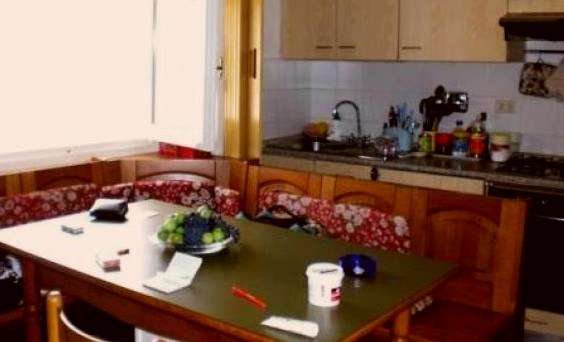
Thursday, December 05, 2013
With Sollecito’s First Plea For Mitigation Seen As A Flop, His Behavior Seems Extremely Suspect
Posted by Peter Quennell

Sollecito headed for Dominican Republic, but stopped pending court okay
1. Post Overview
A week ago Prosecutor Crini had begun a two-day summary of the state’s case so stark and implacable that it had two effects on Sollecito.
He stayed in his hotel on the second day; and he then took off like a rabbit for some destination initially unknown and repeatedly lied-about by his father (see Part 3 below).
One of his lawyers (accidentally?) broke the secret. Sollecito had flown to the Dominican Republic. Where he just happens to have some really unsavory relatives.
2. High Drama In The Nencini Court
Sollecito has not ever taken the witness stand.
And given the minefield his foolish book and media claims amount to, don’t hold your breath expecting otherwise soon. However, last month Sollecito did use the Italian accuseds’ privilege of making an impromptu plea to the judges.
He was not under oath and not subject to cross-examination by the prosecutors. He did not address the copious evidence, and was seen as attempting to humanize himself to perhaps get some years knocked off a final sentence.
As always, Knox forces were left confused, thinking he had somehow helped both of them. But Sollecito repeatedly drew attention to his being an Italian and in effect to Knox and Guede not being Italians, thus once again separating himself from Knox on lines Barbie Nadeau also described here..
Our main poster Yummi was in the court and reported in part as follows:
One of the woman judges kept staring elsewhere and almost never watched Sollecito all the time he was talking. Sollecito’s speech itself was actually not that exciting. It was so overt that he was focused on portraying himself as a person who is so good and cannot hurt anyone, not the bad guy described in the media. The real and only topic of Sollecito’s statement was himself, who he is, his “true” personality, he begged them to look at what a good and suffering a boy he is…
And believe me, Sollecito was just whiny. For a big part of his speech he was just putting distance between who he is today and the person he was when he was 20 years old. He talked about the impossibility of finding a job (the job he would like to have in a corporation, obviously, not just any job) and wanted the judge to project to his condition from that of young Italians who can’t hope to see a future.
Then 10 days ago the skilled senior prosecutor Dr Alessandro Crini fired back, and effectively demolished Sollecito’s premature statement. As we reported, Dr Crini took nearly two days to do that.
Sollecito was again in court on the first day, but was seemingly unable to face Dr Crini’s onslaught on the second day. He remained holed up at his hotel.
Although Dr Crini settled on a lowest-common-denominator motive - a Lord of the Flies flare-up which had escalated into mob violence and the fatal stab to Meredith - his recounting of the evidence and associated behavior of the pack was comprehensive and very hard. Translated from Cronaca:
Meredith was treated “as if she was an animal.” In this way Dr Crini defined the dynamics of the murder of Meredith Kercher during his indictment.
According to Dr Crini, the attack escalated to the point where the attackers felt they “needed to get rid of a girl they had abused”. While Rudy Guede sexually abused Meredith Kercher, supine on the floor of her room, Raffaele Sollecito and Amanda Knox, according to the reconstruction, were at each side of the body of the victim.
“The mouth and neck of the victim were contained in a fierce way to avoid Meredith going berserk and screaming, and when Meredith did in fact manage to scream, she received the final fierce stab to the throat.” Two knives were used in the crime at the house in Via della Pergola on the night between 1 and 2 November 2007”...
Dr Crini referring to the bra clasp of the victim, said that “the presence of the DNA of Raffaele Sollecito is quite certain” and explained at length why there was no “possibility of contamination”.
Amanda Knox was at the scene of the crime, according to the identification made “‹”‹by the scientific police in Meredith’s room of an imprint of a shoe (female size 36-38 according to the results of the analysis)... On the pillowcase, the center of gravity of this bloody history, were found a palmprint of Rudy Guede and this print of the shoe.”
3. High Drama Right After End Of Court
Dr Francesco Sollecito was reported as being shocked by the unrelenting tone of the indictment. However, Sollecito’s plight is not nearly as bad as the ever-stubborn Amanda Knox’s.
Knox has already served three years and was fined heavily for obstruction of justice. She could face another year for that if it is found to have been aggravating. And as the post below mentions, she could face as many as three more charges for aggravating obstruction of justice.
Sollecito in contrast has respected the court by actually showing up, and, unlike Knox, has lately shown restraint in accusing his accusers.
However, the day after Dr Crini ‘s startlingly powerful summary of the case against him, it looked like Sollecito was hastily taking off out of Italy for somewhere.
La Nazione reported that police at Florence Airport had held back a fully loaded Air France flight to Paris while they checked with the prosecution that he was indeed allowed to leave the country. La Nazione said the prosecutors have some concern that he might skip and not come back, but he did voluntarily come back previously from the Dominican Republic, and his family has always ensured some presence in court.
But next TGCom24 reported that Sollecito’s father had claimed that Sollecito had already gone home to Bisceglie, although he is a free citizen still in possession of a passport and can travel anywhere if he wishes.
But then TGCom24 reported that he had indeed flown to Paris, but had turned around and come straight back again, to stay with family friends. And that on 8 December he will sit his final exams in computer science at the University of Verona.
However, soon after that La Nazione reported that Sollecito’s father had been contradicted by his lawyers, and his erratic son had slipped through his fingers and flown “for his work” back to the Dominican Republic. Translation by Jools:
1 December 2013 ““ SCOOP. Denials, lies, game by the defenders. But in the end it’s up to the lawyer Luca Maori to admit: “Raffaele Sollecito returned to Santo Domingo, as anticipated on Friday by La Nazione”
He embarked from Florence’s Peretola Airport and made a stop-over in Paris, from where he then flew to the Caribbean island where he spent the last few months that preceded the start of the new appeals process. “But there is nothing strange - minimizes the lawyer - Raffaele went back to pick up the things he left there, will be back in ten days for the final exams and to await the judgment. With anxiety, but self-assured.”
No escape, just a normal “work” trip. Permissible, since there is no measure that prevents the accused to leave Italy. But the departure of Sollecito, accused of the murder of Meredith Kercher along with former girlfriend Amanda Knox (already sheltered in the U.S.) caused some sneering. And even the agents of the Border Police, when they saw him in front of the [departure] gate, made a phone call to the Procura to be sure whether the journey in the midst of the appeal process was really “normal.”
IN FACT. Sollecito ‘s father, in an understandable effort to defend his already too overexposed son, slipped on the so-called banana peel, placing the young man within a few hours in various locations, but never in the true destination across the ocean: in Verona, preparing for the final exam in computer science in regard to the thesis, or in Paris, but just for a flash-stay from which he was back the day after. At Christmas, maintained the father, Raffaele will return from abroad. Maybe for the last break before the final rush of the Mark II process, which, according to calculations by the Assize Court of Appeal, could be concluded on January 15.
Meanwhile, the hearing on 16 December is for the remaining civil parties, then double date for the defence, (December 17 and January 9) and hearing on the 10 dedicated to counter-argument. With Sollecito in the courtroom, assures the lawyer.
Nothing strange?! Doctor Sollecito lying repeatedly, instead of explaining to the media where Raffaele went, and why he went there, and why it was a huge secret, was VERY strange.
It should have official minds very seriously wondering why. WHAT did Raffaele have to do so secretly in the Dominican Republic - where his notorious mafia relatives from Montreal occupy a town there?
Tuesday, November 26, 2013
Appeal Session #5: Prosecutor Alessandro Crini Concludes, Proposes 30 Years For AK And 26 For RS
Posted by Our Main Posters
Overview
This is the report on the second day of Prosecutor Crnini summarizing the entire case.
This was not attempted at such length at the 2011 Hellman appeal and that panel of judges was perhaps not ever fully in the picture. The first day of the presentation is reported on here.
Real-Time Reporting, Bottom Up
4. Assessment by main poster SeekingUnderstanding
The case put forward by the prosecution and reported to us by Yummi is almost startling in its lucid and concise approach.
It couldn’t be more in contrast to the equivocations and disingenuousness, as well as irrelevant sentimentality that we have unfortunately become used to witnessing. The cutting use of logic was therefore refreshing, and gives grounds for optimism, albeit it tempered by unknowns.
All the issues seemed to be addressed from the base line, as if from primary considerations. And many points were simply politely dismissed as being unimportant to the true case in hand -which is the establishment of the guilt (or not) of the accused. For example, it was great to hear that the reason why the knife had been brought to the cottage need not be examined - it was enough that it was there.
It seemed that where the defence had challenged the evidence, for example suggesting contamination of DNA, it was here that Crini spared no detail, and took time in bottoming out the logic, and dispensing with their points. His arguments certainly carried conviction to me.
I was glad to see motive and behavioural dynamics looked at, as indeed Cassation had requested. It seemed good too that Crini ruled out premeditation, and reduced the dynamics to something highly plausible and believable as well as simple. There are just two points I might observe :
First, it would seem within character for Meredith to have been both open and direct in confronting issues of hygiene, drug use, infringement of privacy and noise etc., (or even theft of rent money, another possibility). I am not convinced that she would necessarily have been aggressively confrontational. Someone who is relaxed within themselves, accepting of their self, is well able to be assertive in a non-provocative manner. That is quite British too - especially old-fashioned English.
Secondly, bearing in mind the possible or probable profiles of the defendants, it would not have taken more than one small trigger of reasonable confrontation to release the consequent temper-tantrum or drug fuelled rage. I do not think we are dealing with something proportionate - and this is also why it escalated in the terrifying way it did. I don’t think it is essential to hypothesize as to what in particular Meredith raised an objection to (e.g. Rudy’s bathroom event). It is probable that Meredith’s concerns were reasonable, and then the overly defensive and angry reaction to any criticism whatsoever was unreasonable. I personally think this is enough.
I liked the way Crini said that even though a source is unreliable or not credible in some ways, that does not mean they do not (inadvertently as it were) give out information that is also true and useful. Possibly other statements from Guede might be taken into account in this way?
As a psychologist, it would seem dialogue with Rudy might yet be fruitful, but, with things the way they remain with the other two, it does not seem the time now for further words. Something else needs to happen.
3. Assessment by main poster James Raper
Crini spent about 10 hours in total addressing the court and was certainly very thorough. Maresca was so impressed that there was no need for him to add anything further.
Crini came to the prosecution case without the baggage of having presented any previous scenario or of having had his reputation sullied and slandered by the Knox PR machine. He reviewed the evidence dispassionately and found it compelling.
Clearly he also found the previous machinations of C&V and the Hellmann court objectionable and went in hard here, even discussing previous cases where Vecchiotti and Conti had goofed up. Hellmann had tried so hard to avoid that coming out during his appeal.
He was not, however, averse to taking a different tack where he thought this was appropriate. A sign of his intellectual honesty which may have impressed the court.
For instance, he thought that there was no need to nail TOD down to 11.30pm as Mignini had sought to do. He allowed for an earlier TOD.
He was of the opinion that coming up with an exact time line for a period in which there is no alibi, and when there is already evidence of involvement in murder, is of only marginal interest.
He spent well over an hour discussing the knife. He did not think it necessary to mull over how it came to be at the cottage. That is speculation that need not detain anyone if the knife is accepted as the murder weapon, and he thinks that on all the evidence it is.
He ruled out premeditation, even as to a hazing, and presented a very simple scenario as to motive and the dynamics behind and during the attack on poor Meredith. Keeping it simple makes it understandable to everyone. Elaborate further and you risk alienating someone who disagrees with the elaboration and thinks they have a better theory.
My only objection is that it is a tad ridiculous to believe that Meredith objected to poop being left in the toilet, the toilet she didn’t use. But yes, the objectionable behaviour of a trio of drunken/drugged up louts invading her space would most likely have triggered argument, unpleasantness and then a fight.
There is plenty of character evidence to support that scenario and with a little imagination, and some recollection of one’s student days, one can easily see how this might have gone. In a way, and Crini admitted to this possibility, Meredith’s own behaviour, or misreading of the situation, may also have been a trigger. Whether one agrees with this or not, it is at least a believable and honest suggestion.
So he set out base camp for the court (bearing in mind that Cassation had suggested that behavioural dynamics be given serious consideration by the appeals court) and whether the judges elaborate further (perhaps by conjecturing a possible range of equally valid motives and dynamics) is up to them.
2. Assessment by main poster Hopeful
Crini is magnificent! He’s absolutely crushing the defense. He nails Knox as having left her bloody shoeprint on the pillow under Meredith.
He accepts Novelli who found Meredith’s trace on the knife. He believes Knox left DNA on the knife. He quotes from differing experts Gill and Balding and says Sollecito’s DNA on the bra clasp stands.
He describes a small, very sharp knife that he believes was used to cut off the bra in several places. He says the knifeprint on the sheet was from the big kitchen knife.
Crini contends that the strong bruise marks around Meredith’s mouth were from restraining her and blocking the scream.
He believes this fight was caused by Meredith angrily reacting to Knox’s constant dirty ways in the cottage and Guede’s nasty toilet habit along with his and Sollecito’s unwanted presence in the cottage that night.
Crini argues a crime of rage when Knox was confronted by Meredith, citing Laura Mezetti’s remarks about the cleaning conflicts. Crini says that Meredith’s scream is what caused the fatal knife blow to silence her.
Not premeditated, the murder was the final result of the perps’ terror that they had gone too far during the raging fight. He’s asking for 30 years for Knox and asks to increase sentence for calunnia to 4 years, inclusive in the 30.
He almost laughs at Knox’s weak excuse over the drops of her blood found in the bathroom, saying she would surely have known if she bled.
He confirms the storekeeper did see Knox early in the morning after the crime. He finds no proof of Sollecito being firmly at his computer sending emails during the crime. He blasts the Knox and Sollecito alibis as being a tissue of lies.
Crini has another ex-Supreme Court justice standing with him in the Florence courtroom! (Baglione). Crini has worked extremely hard. He has conquered this convoluted pack of lies and distortions and his diligence shows. He upturned the applecart of Conti-Vecchioti nonsense and thoroughly redeemed Stefanoni’s findings.
He has completely severed the heads of this Medusa Gorgon mess, Crini is the bomb!
1. Tweets continue from main poster Yummi
114. This means a total request of 30 years for Knox and 26 years for Sollecito
113. [Propose] 26 years for both for the murder
112. The murder is contextual, their was no premeditation, and no futile motive
111. Because of their staging and denials, they should not be given generic mitigation for murder.
110. Requests to increase the penalty for [Knox] calunnia to 4 years
109. But experience tells statements of unreliable perps do contain revelations about the truth. The ‘argument’ between girls, why such context?
108. Rudy Guede has no credibility, even if the Supreme Court is right that this cannot depend on his refusal to answer.
107. Crini cites Laura Mezzetti about the ‘annoyance’ caused by Knox on house cleaning issues.
106. Meredith was the one triggering an argument because of the ‘impolite’ invasion and behavior. She accused Knox .
105. Rudy was not sober, quite high, a bit annoying, and was acting the same disgusting way he behaved downstairs days before.
104. Meredith Kercher was sober, fully awake. The others were at least ‘smoked’, a bit high, Rudy was there in the house.
103. The motive is not futile, the motive is terror, it is the consequence of the prior aggressive action in which they were involved.
102. Nothing points to an agreed plan among the three that run out of control; the first cause was an aggression, a clash, impetus of rage
101. Crini: there is a prosecution duty to conjecture a motive.
100. The blood drop on the tap: a point is Knox does not explain, guesses, while she must be aware that she bled in the bathroom.
99. Crini believes the shoe prints on the pillowcase are from a female’s shoe as suggested by police
98. Knox’s DNA between the blade and the handle (36-i)is very significant. It’s not from sweat or contact.
97. The print on the bed sheet is compatible with the kitchen knife.
96. Crini: we don’t need to figure a reason for a kitchen knife to be carried from one apartment to the other..
95. The bra straps are cut in multiple points, not with a kitchen knife.
94. Sollecito cut her bra with a knife in multiple parts. hold bra to cut it - no Guede’s DNA in that point - used a small very sharp-edge knife
93. Rudy did not stab her, because he wad used both his hands, which were unarmed
92. Wounds indicate she was immobilized by multiple people, they killed her because failing to do so completely, were terrified by her scream.
91. Criticizes Torre’s theory that the large wound could be caused by a small knife: improbable, the wound has clear margins.
90. There were two knifes, one was small, not much fit to kill.
89. Ridiculous to think that Rudy Guede - which she knew - could intimidate Meredith totally to that point. She would react.
88. Specific indicator: no defence wounds; means bruises are not from fight but restraint.
87. Description of bruises and lesions around her mouth, indicates extreme force to prevent from screaming. Rest of body was also immobilized.
86. She was still wearing a blue sweater which was removed subsequently.
85. Analysis of blood drop pattern and position of victim when stabbed; body moved in a different position.
84. Location of crime - space between the bed and the wardrobe - is peculiar, analysed by UACV
83. Crini says will sketch a dynamic of events of the crime.
82. Crini says - implying Vecchiotti, Pascali - some experts should be “hold where they belong”
81. Crini recall Pascali working on the Olgiata and the Claps case (2008, 2010);
80. There is no instance of transfer of Sollecito’s DNA anywhere on the scene
79. Crini cites the Olgiata case.
78. Contamination must be deduced from context of finding and collection. You must think a practical way for Sollecito’s DNA to be transferred
77. Tagliabracci defends Vecchiotti saying the RIS statistical techniques were not used at the time; Crini cites Gill and Balding
76. Guede’s Y haplotype in victim’s vagina alone was used to identify him.
75. Sollecito’s DNA is certainly on the clasp for the police; Vecchiotti doubts but considers X separately from Y haplotype
74. The bra clasp: the first objection was the interpretation of the mixed/complex trace
73. Crini says he learned a bit of genetics working on cold cases
72. Vecchiotti and Tagliabracci have a reliability problem in relation to the case, for different reasons
71. Vecchiotti said she obtained all cooperation she required. Raw data could be accessed by accessing the machine itself as Stefanoni offered.
70. Crini says he found out the negative controls were deposited, the court will find the document of deposit etc.
69. Vecchiotti omitted to note the censures/observations written by the other consultants, this procedure is incorrect
68. Vecchiotti’s approach to the I-trace (refusal to test it ) was ‘ideological’, ‘weak’, ‘insufficient’
67. Interpretation of profile is for complex result. For non-complex profiles there is actually no ‘interpretation’.
66. Crini recalls answers by the RIS, defence tried to elicit approval of CV, but RIS said multiple test only if possible, compromise for result
65. Novelli cited saying the profile of Meredith is certain.
64. Meredith’s profile came out clean on a single amplification, means the trace is clear.
63. The meaning of test repetition is its necessity when you have a ‘dirty’, uncertain sequence like Knox’s profile on the knife
62. Novelli knows very well about double and triple amplification protocols, and Stefanoni knows well too
61. Guidelines are an indication that guide your driver, but then you have to drive
60. Someone who keeps a refrigerator like the one Vecchiotti has, should be less critical about laboratory practice
59. Crini: should we toss any result in the garbage, no matter how important and clear, whenever the test is not repeated?
58. Speaks about the single amplification by Stefanoni versus guidelines.
57. The presence of human DNA in a scratch on the blade of a knife itself is not usual
56. Crini: another introduction specific on DNA; notes btw that the new RIS finding is ‘important’ because adds information
55. Crini makes an introduction about circumstantial evidence
54. Discussion on DNA and remaining evidence will start in 1h.
53. Francesco Sollecito [in interview] was shocked, said he never expected so aggressive arguments from PG [the Tuscany Prosecutor General]
52. Yesterday, Crini spent the first hour to argue about logical ‘method’: how assess evidence altogether, examples, quotes of SC sentences


